Testing Vesper Cortex M1: excellent AIS, monitoring, and much more in one box
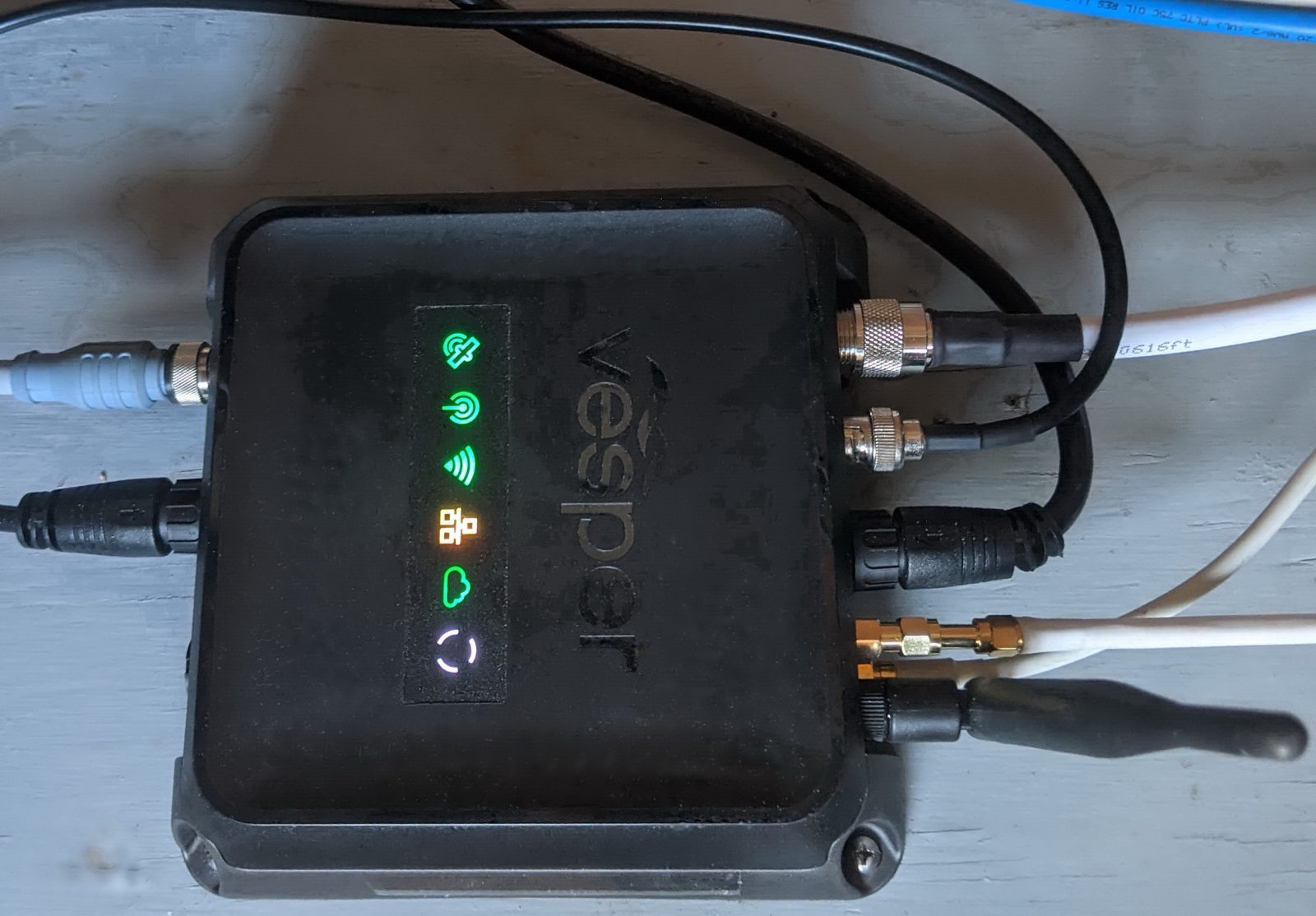
What a box! If possible, I’d expand the headline to “excellent AIS transceiver, dual antenna splitter, high-performance GNSS, AIS display and collision avoidance, NMEA 0183 & 2000 data multiplexing, nav app WiFi support, anchor watch, and general off-boat monitoring.” And even that long list leaves out the powerful VHF radio that’s also inside the M1 hub, accessible with the innovative multifunction Cortex handsets, and understandably the most prominent feature in Vesper’s marketing. But that’s my plan for this review.
After intently testing Vesper Marine’s Cortex system over the last two months, I have more to say than fits even a long Panbo entry (and even despite Ben Stein’s detailed coverage of the Cortex launch last fall). So this entry is all about what the M1 hub can do by itself, with details of the VHF radio and H1 handsets to follow. This plan also makes sense because the hub can be purchased standalone, and it might be all the Cortex some boaters want.
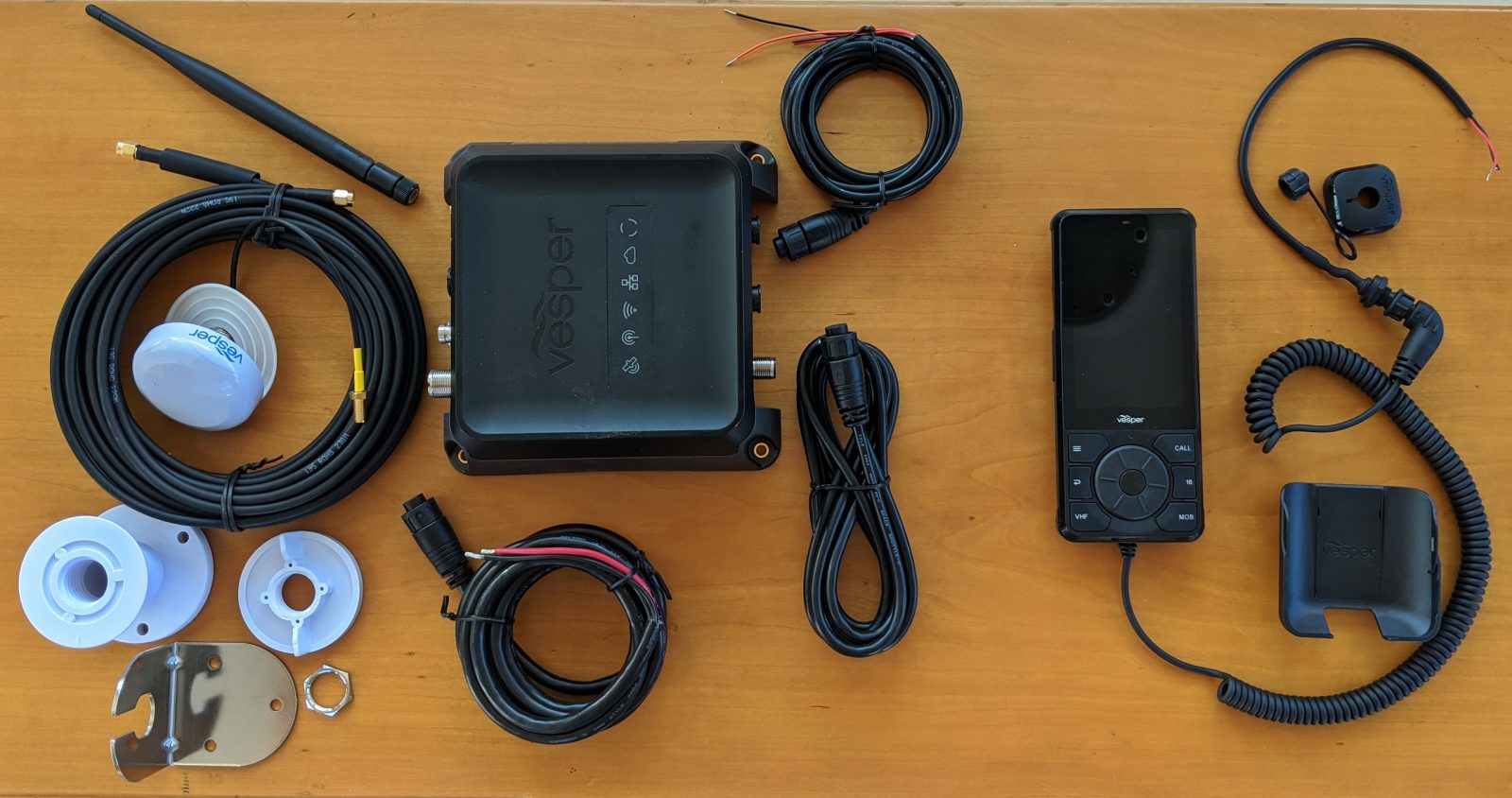
To be more specific, Vesper sent me the $1,849 Cortex V1 kit above for testing, but you can purchase the M1 hub for $1,299 and later add one or many H1 or H1P handsets for $599 each. I’m not saying that you won’t be sorely tempted to add a handset once you understand how well it works with all the hub can do, but let’s focus on the hub’s standalone abilities first. And, yes, the prices took me aback at first too, but that’s no longer true now that I’ve experienced how central Cortex can be to a safe and relaxed vessel.
Dual antenna splitters

The diagram above from the Cortex Hub manual is a useful visual of the system’s many capabilities, but please note how a “Secondary VHF” can connect to the M1’s built-in antenna splitter. In fact, the M1 box contains the electronic equivalent of Vesper’s well regarded SP160 AIS/VHF/FM splitter (minus the FM output), and it works fine with the Standard Horizon GX6000 VHF/AISrx already being tested on Gizmo. There’s no detectable decline in VHF transmission or reception (or AIS reception) with the Hub between the GX radio and the antenna.
So it’s easy to add Cortex AIS to a boat with an existing VHF, though best performance will come with a wideband VHF/AIS antenna like the Shakespeare 6500-WB I recently installed. Actually, there are many good AIS transceivers with antenna splitters built-in (as you can see at Milltech Marine). But here’s the Cortex kicker (that may go unnoticed in its huge feature list): When the VHF side of its internal software radio is enabled with an H1 handset, the AIS and VHF transmissions are also managed for one antenna.
In other words, the Cortex M1 includes two antenna splitters, and they work fine simultaneously. Pretty much throughout the two months of testing, Gizmo has had two VHF transceivers, an AIS transceiver, and an AIS receiver all attached to one antenna with no detectable downside. So it’s also easy to add Cortex VHF while retaining an existing VHF as a backup and/or for functions like hailing and automated fog signals that Cortex VHF may not have yet.
Power efficient SOTDMA AIS with Heading sensor
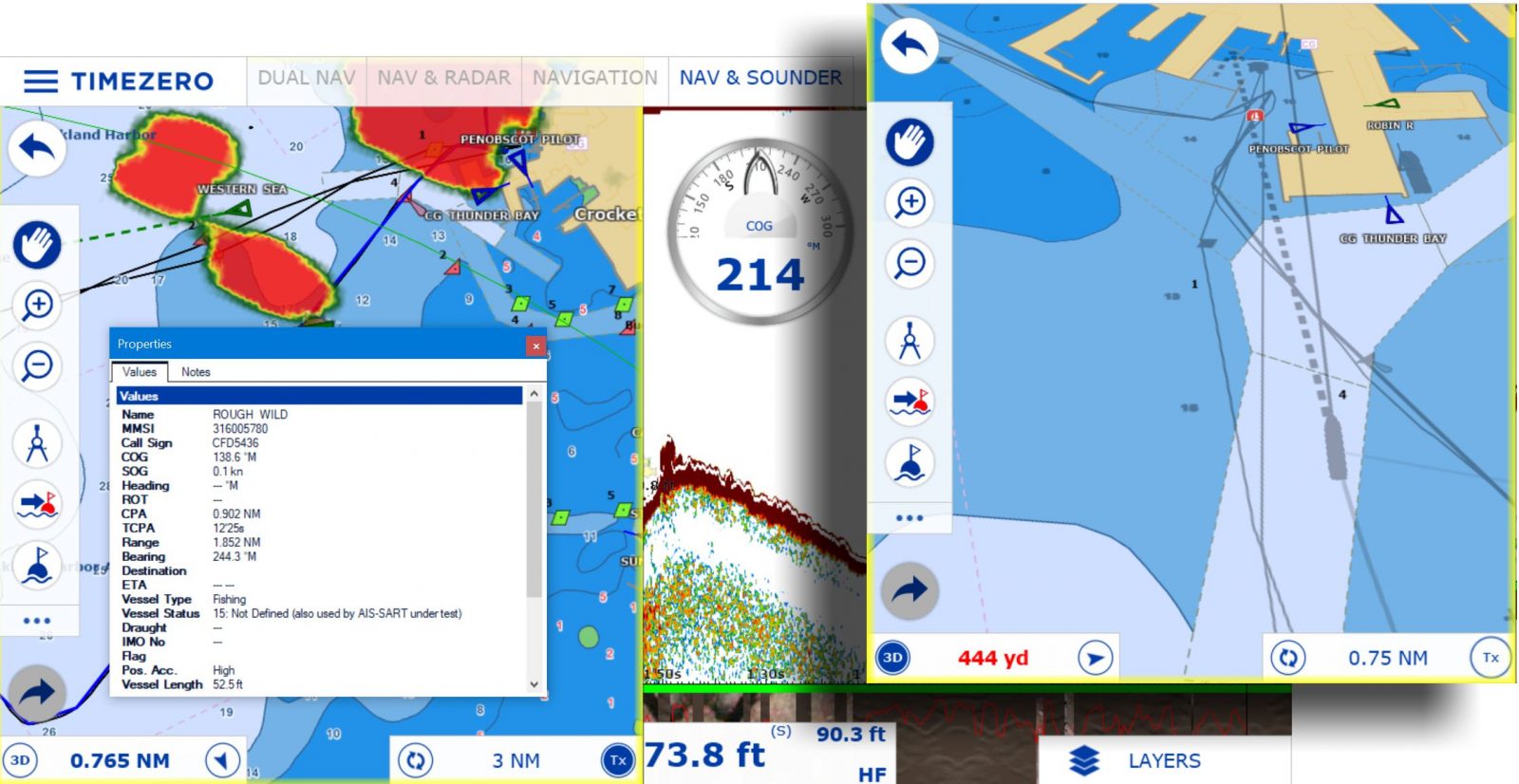
Seen above is Cortex M1 AIS target data as displayed in the TimeZero Navigator PC software that’s now the main navigation tool at Gizmo’s lower helm. It’s coming over NMEA 2000, but the hub also outputs target info over NMEA 0183 and WiFi, just like many current AIS transceivers. But note the oddly docked targets at right, because they illustrate a pesky AIS display problem that the M1 uniquely solves.
When an AIS does not transmit Heading, the MFD or app trying to display that target only has Course over Ground (COG) to work with, and COG on a stopped boat is less than useless. That’s why 4 of the 5 vessels tied up around the big Rockland pier in front of Gizmo appear to be headed in unlikely directions. I’d rather that TZ and other AIS display software simply show targets like that — with no speed and no Heading — as dots instead of misinformation. That’s what the Marine Traffic online AIS site does these days, which is also useful for illustrating the Heading sensor built into the Cortex M1.
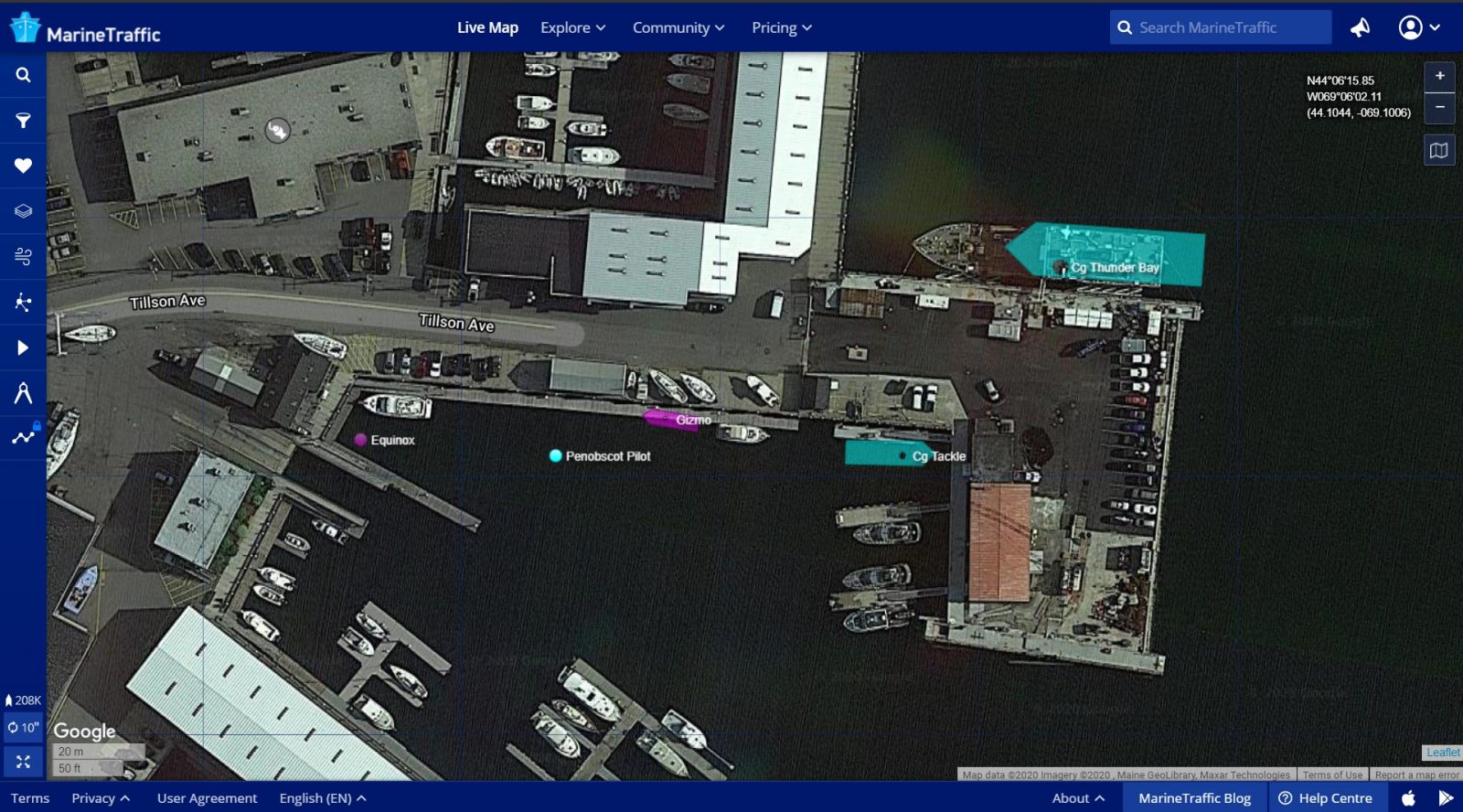
This is the same pier later that day, and it’s no surprise that the two USCG vessels are properly scaled and oriented because they’re using Class A transceivers with mandated Heading sensors and everything was well set up. But it’s also unsurprising that the two Class B vessels displayed as dots either don’t have Heading sensors attached or the sensors were turned off after tying up. On most AIS displays, Heading-less boats are apt to point where they’re not when docked, anchored or just drift fishing.
Vesper does not claim great accuracy for the Cortex M1’s built-in Heading sensor, and it will automatically switch to Heading coming in over NMEA 0183 or 2000. But as installed in the cabinet beneath Gizmo’s flybridge electronics, the M1 automatically calibrated a Heading within 10 degrees of the boat’s best sensor, and there she is well displayed like the big boats.
To the best of my knowledge, the Cortex hub is the first AIS with Heading included, and it’s useful in other ways, like the much advanced Vesper anchor watch feature we’ll get to. Moreover, and extra pleasing, the added sensor — plus all the other M1 extras, like the cellular radio used for off boat monitoring — don’t seem to cost extra battery drain. I measured about 0.6 amp average load with all features operating, and that’s very close to a regular Class B AIS. (And the bright touchscreen handsets are also very power efficient.)
Meanwhile, the Cortex M1 is also transmitting your boat’s AIS info using the newer Class B protocol known as SOTDMA or Class B/S0, so it’s going out at 5 Watts instead of the 2 Watts used by the original Class B Carrier Sense (CS) standard. Also, dynamic data transmissions are more frequent than CS when you’re underway at 14 knots or more (as I explained here), and thus the AIS displays on nearby vessels can track you more accurately. Finally, Class B/SO integrates somewhat better with Class A transceivers, which means that you may be seen better in congested areas where all forms of AIS are negotiating for free time slots. In short, SOTDMA is the way to go, I think (especially now that the price differential is minor).
AIS decluttering & collision avoidance
Before getting into the Cortex Onboard app that comes with the M1 hub, let’s recall that Vesper Marine’s original goal back in 2007 was to improve AIS as a collision avoidance tool. In fact, the first WatchMate product I wrote about could not even receive or plot AIS targets, but it could filter and alarm them in intelligent ways that no other marine electronics was offering. In my experience, Vesper has maintained that lead ever since.
So Cortex Onboard functions a lot like Vesper’s award-winning WatchMate app, all smartAIS features included, but they’ve upped their game yet again. Note, for instance, the new set of target symbols seen on these Onboard screens (especially upper right and partially explained here). Several companies have tried to make target icons more informative — Raymarine perhaps most notably — but Vesper’s worked well for me almost on first sight.
When fellow skippers express frustration about AIS clutter and/or over alarming — even anger about boats that leave their AIS on while anchored or docked — I respond that better target displays are the real solution. That’s largely because I’ve seen how well the long line of Vesper products has filtered graphic target displays to emphasize the important one and also limited alarms to situations that make sense.
All AIS plotting displays constantly monitor targets for dangerous CPA/TCPA possibilities, but I think that only Vesper makes Class B transceivers that do their own calculations. That’s why the Cortex M1 can sound a collision alarm without any AIS display powered up. Another nice result (though hard to illustrate): When you open Cortex Onboard, you’ll immediately see all current targets including less frequently broadcast static details like vessel names, types, and sizes.
Vesper also recognized a long time ago that optimal filter and alarming settings vary depending on where you are and how you’re using your boat. What’s slightly different in the Cortex user interface is that separate declutter (filter) and alarm preferences are ordered by use instead of location (like WatchMate’s harbor, coastal, etc. profiles). I haven’t completely adapted to the changes yet, but I do know that the most aggressive “only high risk” declutter preference is what I might use to clarify, say, the AIS madness of New York Harbor. And I like how “stationary” shrinks and dims the symbols for all the moored AIS vessels in my harbor so I can easily monitor the active boats.
Collision alarm preferences in Cortex currently vary from the least alarmist “at the helm” to “on autopilot” though I’m pretty sure that a no-alarm “at dock” (or “at peace”) preference will be added soon (via Cortex’s exceptionally easy update system). But you can see on the second screen above that audio alarms can already be silenced for 5 minutes or the rest of your onboard session right from the Cortex Onboard alarm screen.
Moreover, Cortex’s audio alarms are spoken by a calm feminine computer voice, which then ramps up in volume, unless you respond, and finally becomes a siren sound. And that audio can come from a speaker attached to the hub, phones or tablets running the Onboard app, Cortex handsets, or all of the above.
Many MFDs and nav apps have smartened up their AIS alarms over the years. For instance, it’s usually easy to turn off CPA/TCPA alarms for stopped vessels, no matter how close they are or how soon you’ll pass them. But to my knowledge, only Vesper helps skippers with changing situations. For instance, offshore I’d likely prefer declutter at “none” to best see any other AIS vessel out there and alarms at “on autopilot” because collision situations can be predicted earlier when most vessels are holding steady courses.
Incidentally, Cortex alarm and declutter preferences can not be customized, unlike WatchMate profiles, but that may change in the future — especially if enough users want it — and so far I’ve found that the preset preferences work well. {Correction 11/21: Cortex AIS alarm Profiles can be customized, very nicely in fact; I don’t know when I missed the Alarm Settings right under Collision Profiles, of if it’s always been there.} And I’ll add by contrast — and to my amazement — that some otherwise excellent MFDs buzz and pop up on a moored AIS target within 500 feet no matter how the alarm is configured (so turning off the “Safe Zone” alarm was the first Garmin lesson I taught last spring, and the owner probably has it set to “always off” today.)
NMEA gateway & Onboard Instruments screen
The Cortex M1’s valuable ability to translate boat data among several protocols is again not a new feature for Vesper — as detailed in my 2014 XB-8000 review — but again it’s improved. So while the WatchMate app could display numeric data wind speed and direction, for instance, Cortex Onboard adds some nice data graphics as well as several data layout choices.
There are also easy ways to select which data fills each field in a layout and then lock it down. In fact, I soon realized that I could use one Instrument page for what I prefer to see underway and another layout for at anchor. Overall, the feature is not as complete as a dedicated NMEA 2000 instrument display, but it’s getting there and the update possibilities are nearly limitless.
Note, however, that the Android version of Cortex Onboard seems more polished than the iOS version, and neither has a landscape mode. This is particularly annoying if you’re used to the WatchMate app’s landscape mode, or if both your helms were recently set up to hold an iPad Pro 11 in landscape mode! Yes, this complaint is a bit personal, but again certainly fixable if and when users push it up Vesper’s to-do list.
But then again, the emphasis on Android portrait mode makes sense when you realize that the Cortex handsets also run Android, and that a central user interface goal was to make instrument display, AIS plotting, and more quite doable on a small portrait screen. And I think that Vesper has already succeeded, even on my phone but especially on the handset (as I’ll try to illustrate in part two of this review).
High-performance GNSS usable elsewhere
The Cortex Onboard (and H1 handset) Instrument screens are just one way the Cortex M1 hub can collect and distribute boat data. 0183 data can also go out on NMEA 2000, and vice versa (with the Onboard configuration screen seen above right, since that’s the narrowest channel). And all goes out over WiFi as detailed in the next section.
But all Class B AIS transceivers include their own GPS reciever because they’re required to know your boat’s position, speed and course without another manufacturer’s input. Well, the M1’s GNSS receiver can also see the Beidou, Galileo, and GLONASS satellite constellations, which means increased accuracy — like the super-precise 0.5 meter HDOP seen above — and it can output that data at a fast 10Hz.
Moreover, Vesper has long been good at outputting configurable and complete GPS/GNSS data over NMEA 2000 so that even the fussiest MFD will consider it valid (as detailed here). In short, the Cortex M1 multifunction hub might also be the best position/SOG/COG sensor aboard your boat, and usable in many ways.
Nav app WiFi support
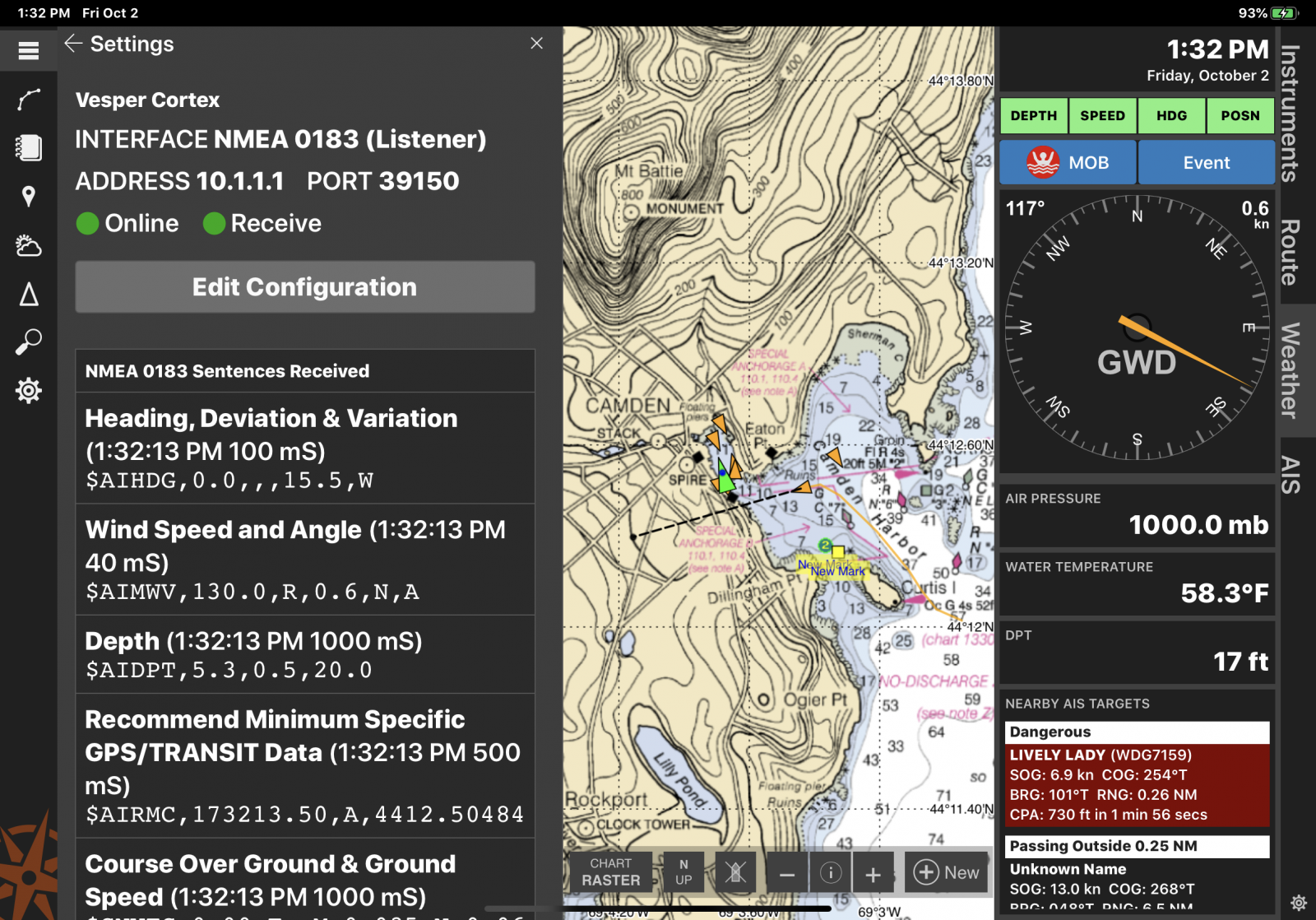
The Cortex M1’s various data features really shine when you use its WiFi output with able navigation software like Coastal Explorer. In the vivid example above, I’m using the beta version of a CE iOS app that will hopefully launch in 2021 — on my iPad Pro in landscape mode, let’s note — but CE running on a Windows PC can make equally complete use of the M1’s output.
In my testing, TimeZero iBoat also displayed all the AIS, GPS and added boat data that Gizmo’s M1 hub outputs over WiFi, and Navionics Boating got AIS and GPS but not Depth (suggesting a Navionics issue). Note, though, that my testing so far has meant using the M1’s direct WiFi connection instead of getting the data via Gizmo’s own boat WiFi router, as I’ve done for years with the Vesper XB8000. Well, the easy QR code access to M1 WiFi (seen at right) will always be useful for original installs, but the boat WiFi feature is coming to Cortex with such certainty that Vesper just added it to the bottom of the Cortex product page.
Anchor Watch improved & extended
Vesper realized in 2010 that a Class B AIS transciever with its own screen and alarm buzzer could also serve well as an anchor watch, and then delivered the feature update like a Christmas present. Eventually it became a beloved graphic page in the WatchMate app along with an external alarm that is fired by an XB8000 (or similar Vesper AIS) even if the iPad is turned off. And in Cortex, it’s not just improved; Anchor Watch can now go ashore with you.
In the Cortex Onboard app screens above you can see that settings like moving the anchor point relative to your boat, or changing the alarm radius, have become buttons, and now you can also rotate the whole graphic display orientation. Boat data like Depth and Wind are still there if networked to the M1 hub — and you remember to leave the network on (see below) — but your boat’s Heading always shows thanks to the built-in sensor.
And note that the righthand Heading screen above represents the pleasing diagnostic and control detail found throughout the Settings portion of the Cortex Onboard app. Notice also how an AIS vessel on which you or the collision avoidance logic has focused stays at the bottom of even Settings screens, so you can keep an eye on what it’s doing and go to full focus with a finger tap.
At any rate, Cortex’s revised Anchor Watch works very well in my experience, and still alarms even with the app off screen, and in my case that can mean the computer lady’s calm voice via my Bluetooth hearing aids.
But, wow, being able to take the Anchor Watch ashore is something many of us Vesper users have craved for a long time. And the development team did it well with a multi-service cellular connection (including optional external antenna) and the separate Cortex Monitor app (which makes sense to me, given the very different use, even the lack of iPad size display).
In the scene above, Gizmo is in a tight cove with sketchy cell service due to the hilly nature preserve that nearly surrounds it. But I could have been hiking those lovely trails reasonably confident that I’d be alerted if the boat violated the alarm radius I set before leaving, or could just check on things if the worry stirred.
And with Cortex Monitor, that means checking lots of things on the boat because once the M1 hub was designed for remote Anchor Watch, why stop there? (As explained by Vesper Marine’s CTO Carl Omundsen in Ben Stein’s first Panbo Podcast.)
And off-boat monitoring!
So Vesper had never developed full-fledged boat monitoring before Cortex, and that certainly showed when I first installed the system. But the hardware design is powerful and after about ten updates in two months, the software is getting there. Now you can see the same M1 and networked Instrument data off boat, which is also logged in the Cortex cloud so that it can be graphed for up to a month. And that info, plus tracking, is still available after the initial 90-day monitoring trial even if you don’t purchase a Cortex service plan.
Cortex Monitor also lets you create multi-parameter alarms, but that’s a tricky business and notification deluges are still sometimes possible. I’m confident, though, that the team responsible for the best collision alarming (I know of) will eventually get this right too. And I’m also hopeful that Vesper will enable added or alternate SMS text messages because I don’t think I’m the only one who pays them more attention than push notifications.
As you may recall from the Cortex system diagram (so darn far up above), the M1 hub also includes wiring for five analog monitoring inputs, two of which can operate relays instead. The configuration is done with Cortex Onboard and is quite complete. I’m also impressed that the Cortex Monitor relay control does not presume success, and moments after that screen you will be informed if the app could not reach the M1.
Meanwhile, the cell service diagnostics — currently only available onboard, though Vesper hopes remote that too — are so complete and current that they sometimes outstrip the cell module’s reporting abilities. That’s why mine sometimes reports “No Signal” even while connected, though at other times it will deliver useful information like Poor, Fair, or Good Signal.
Also, sometimes the M1’s automated quality-of-service cell service switching feature gets indecisively twitchy about whether AT&T or TMobile is the best choice — I can tell by the string of Online/Offline notifications — but I consider that a good problem given my edgy cell area, and I trust it will be smoothed out eventually.
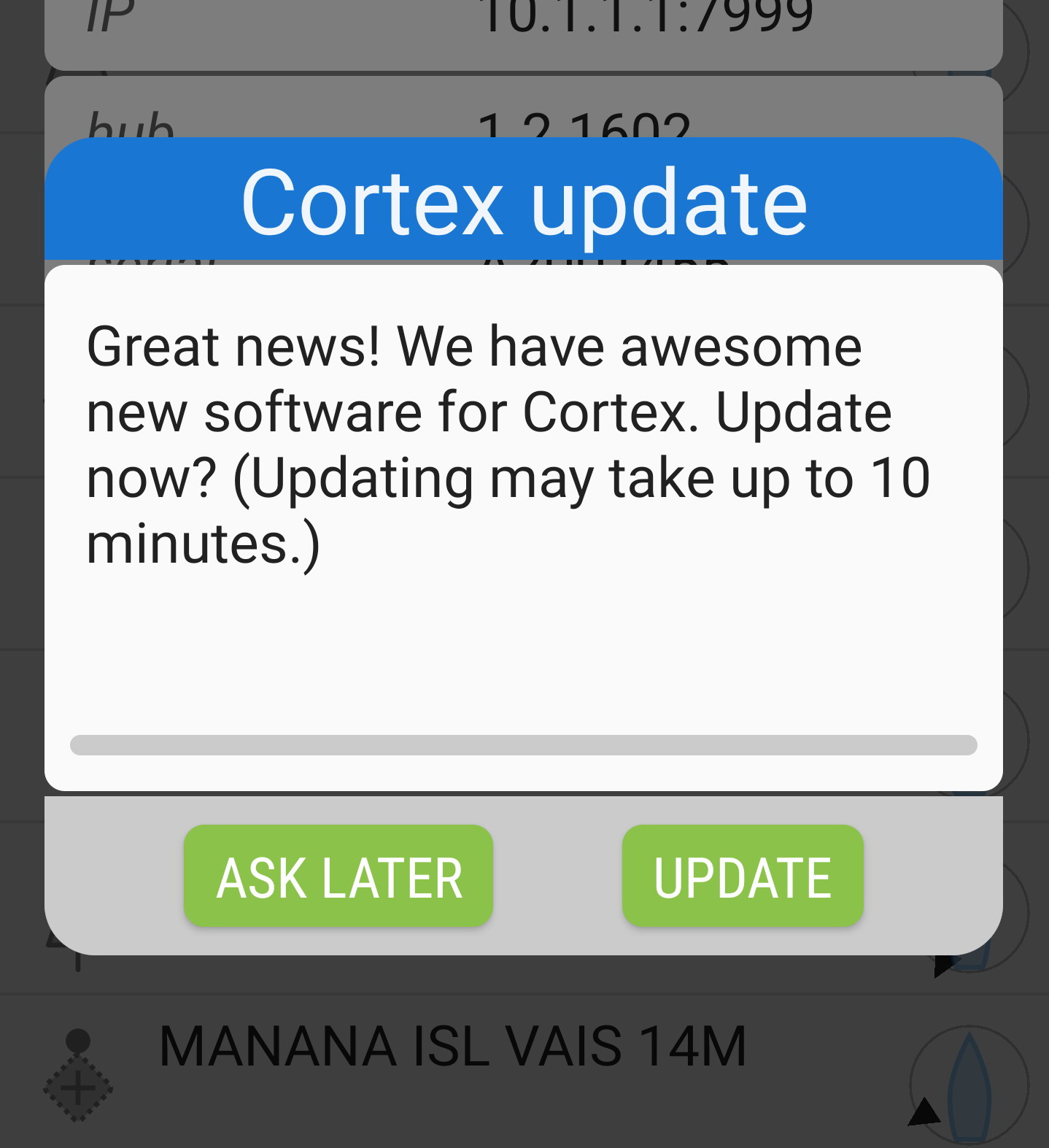
Finally, I can not emphasize enough how easy it is for a Cortex owner to keep the hardware and apps up to date as Vesper fine tunes and builds out the system features. It basically just happens as long as your app device is online from time to time, fully automatic for the apps and with appropriate options for the hardware.
And thank you, dear reader, for staying with me this long. I suspect that you too are understanding how Cortex can play a central and valuable role on your boat, and I intend to cover updates in the comments section (as the system is still working pretty well inside the giant Faraday box in which Gizmo currently rests). And, if you’re not yet thoroughly impressed with Cortex, wait until you see how the M1 works with VHF and the handsets.


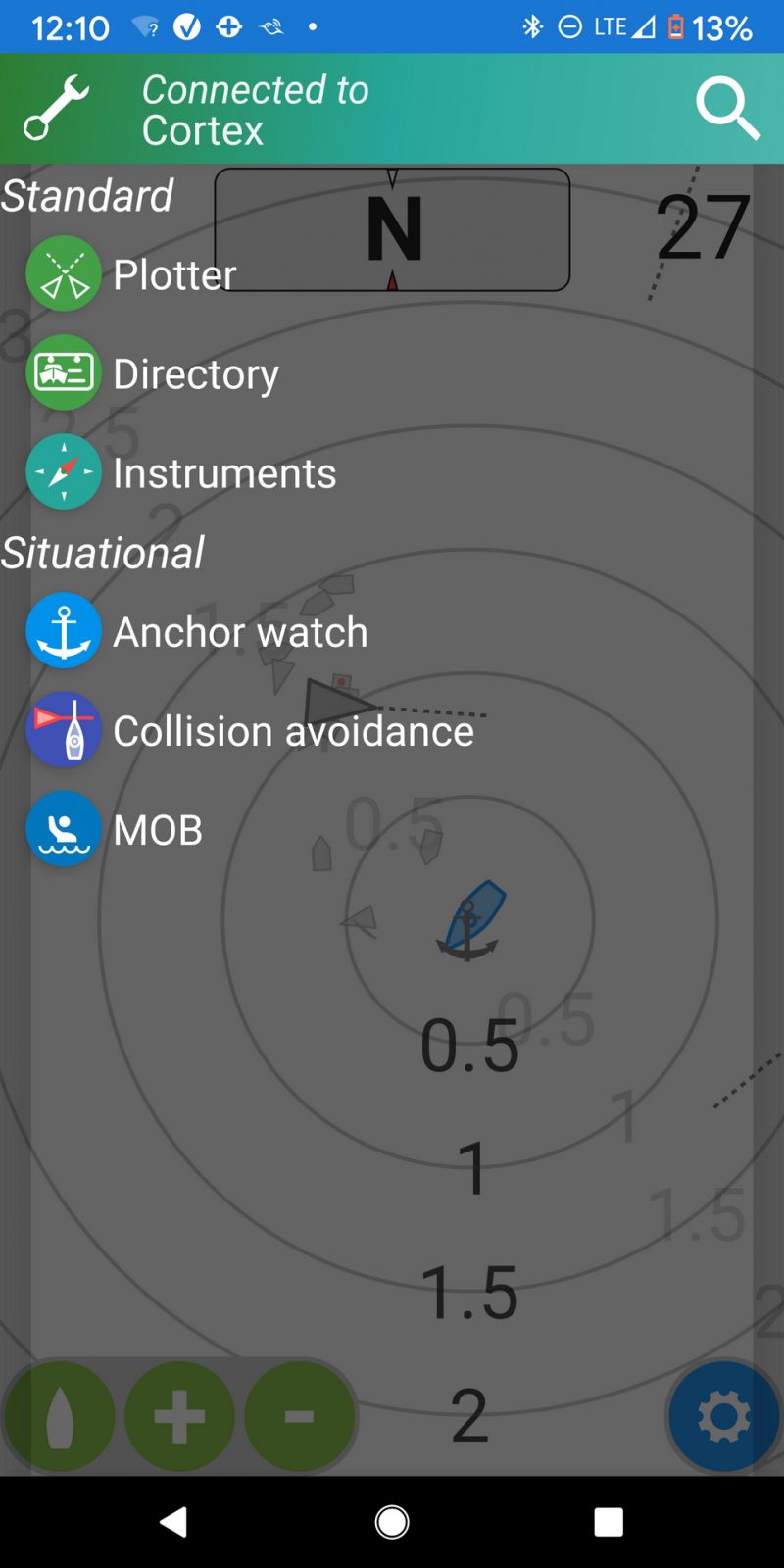

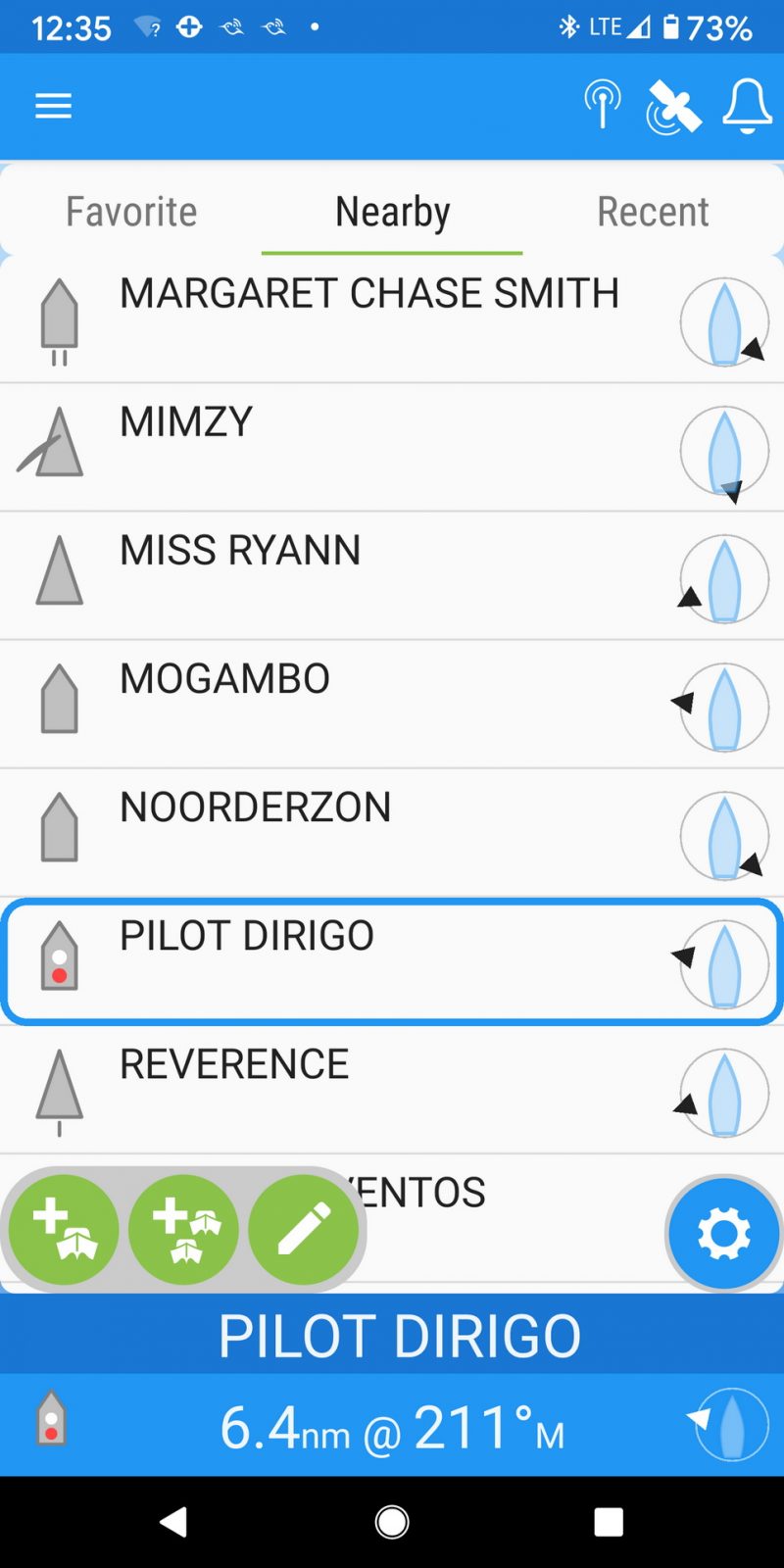

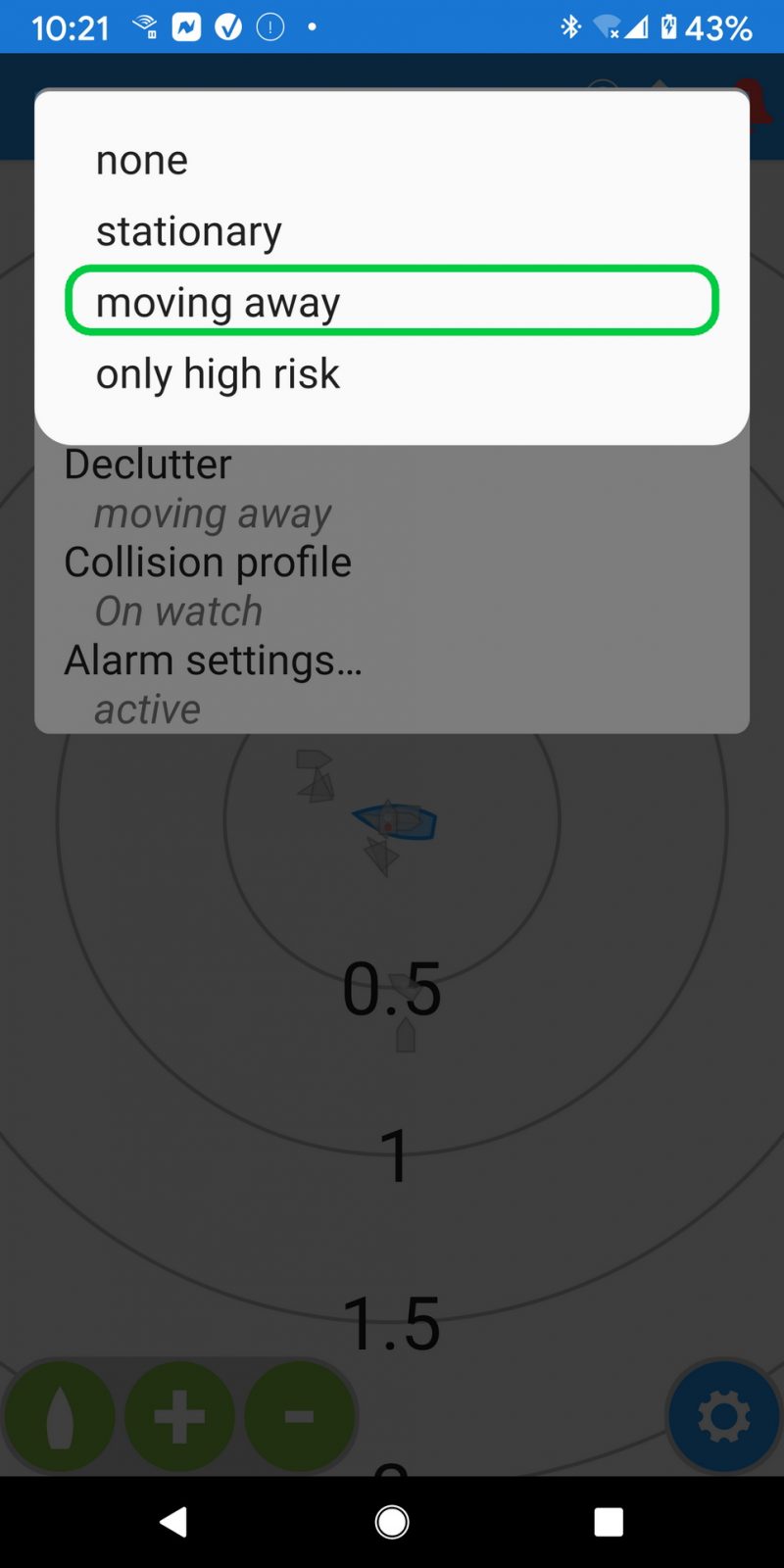
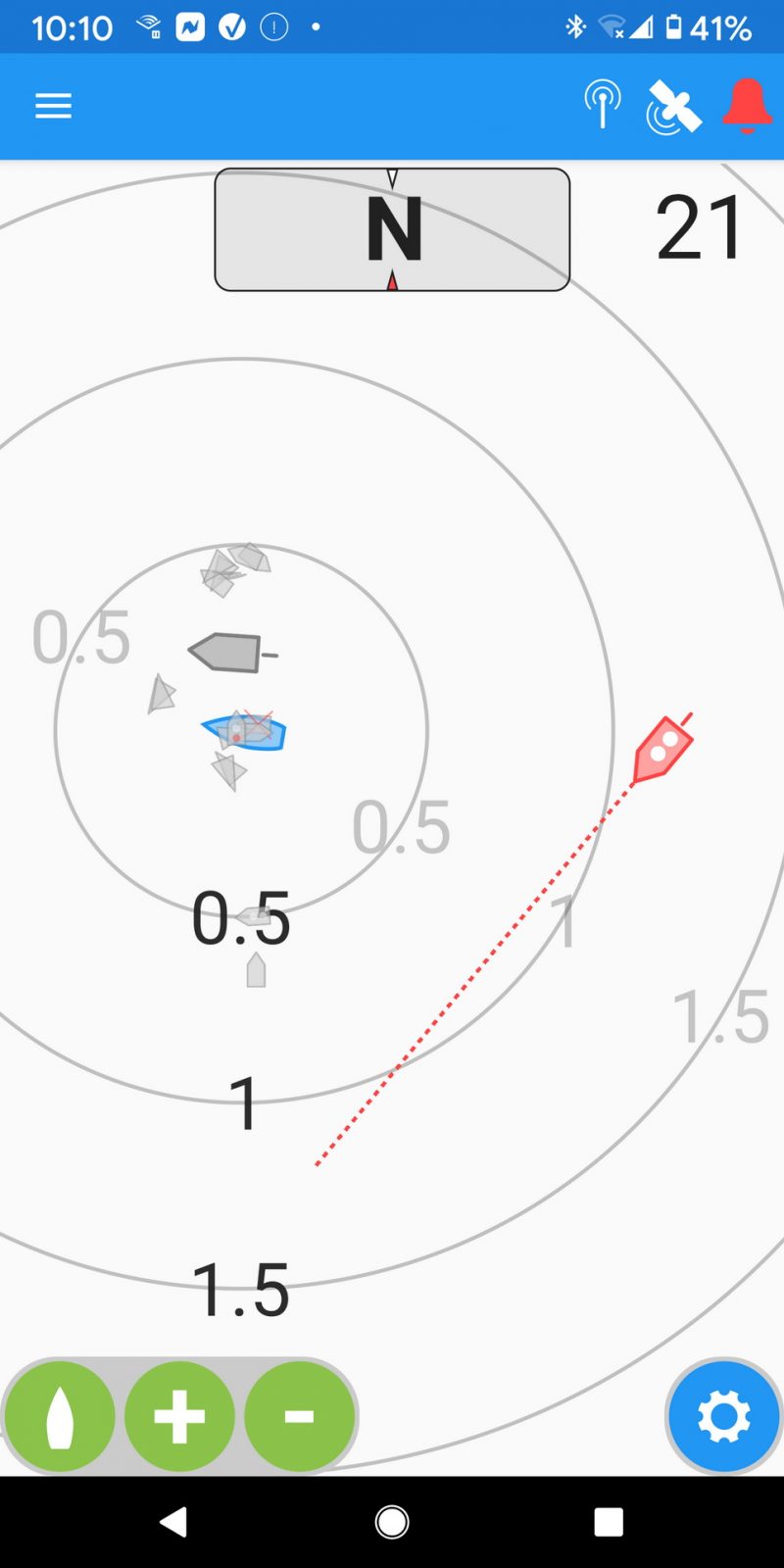
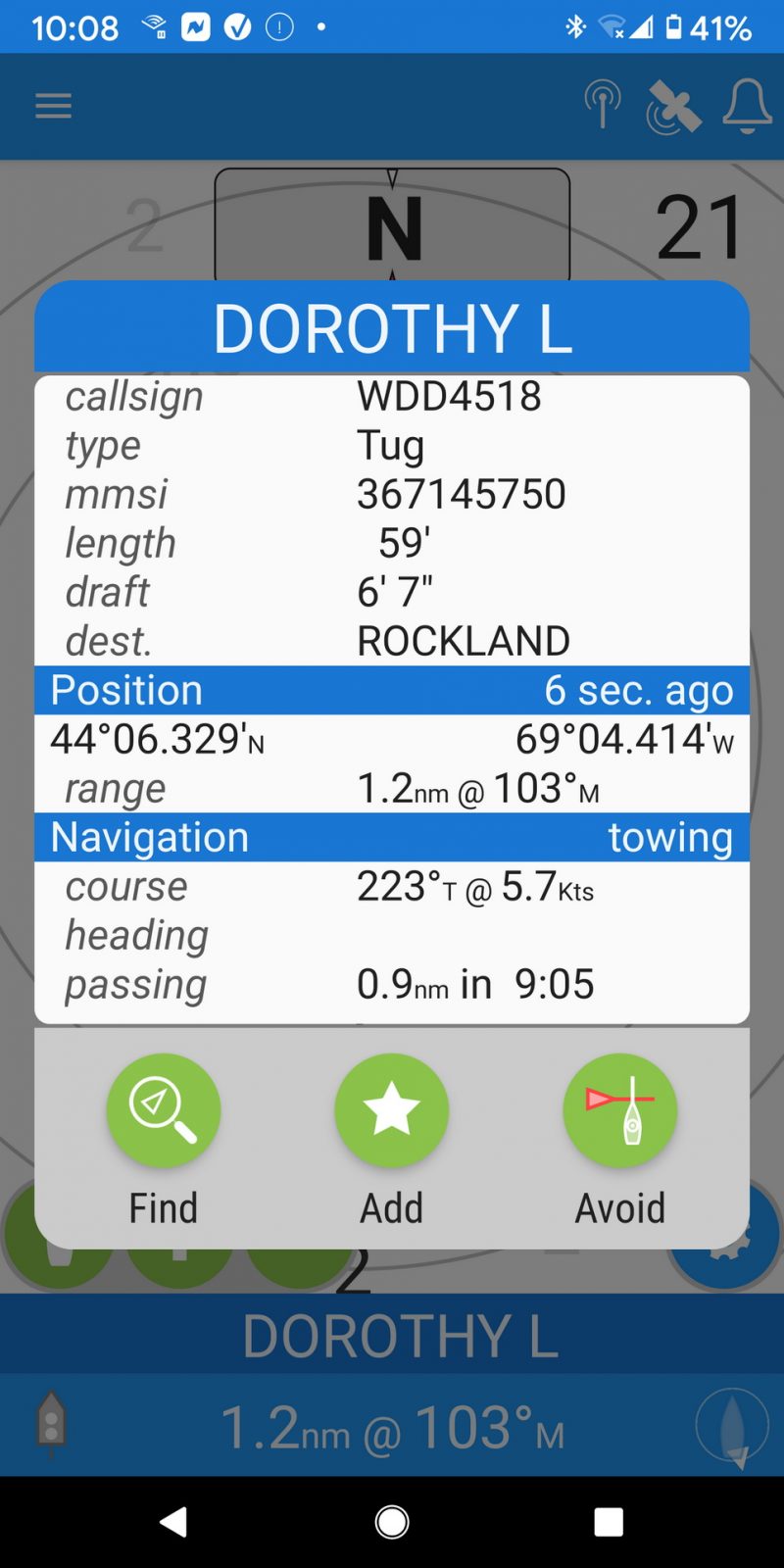
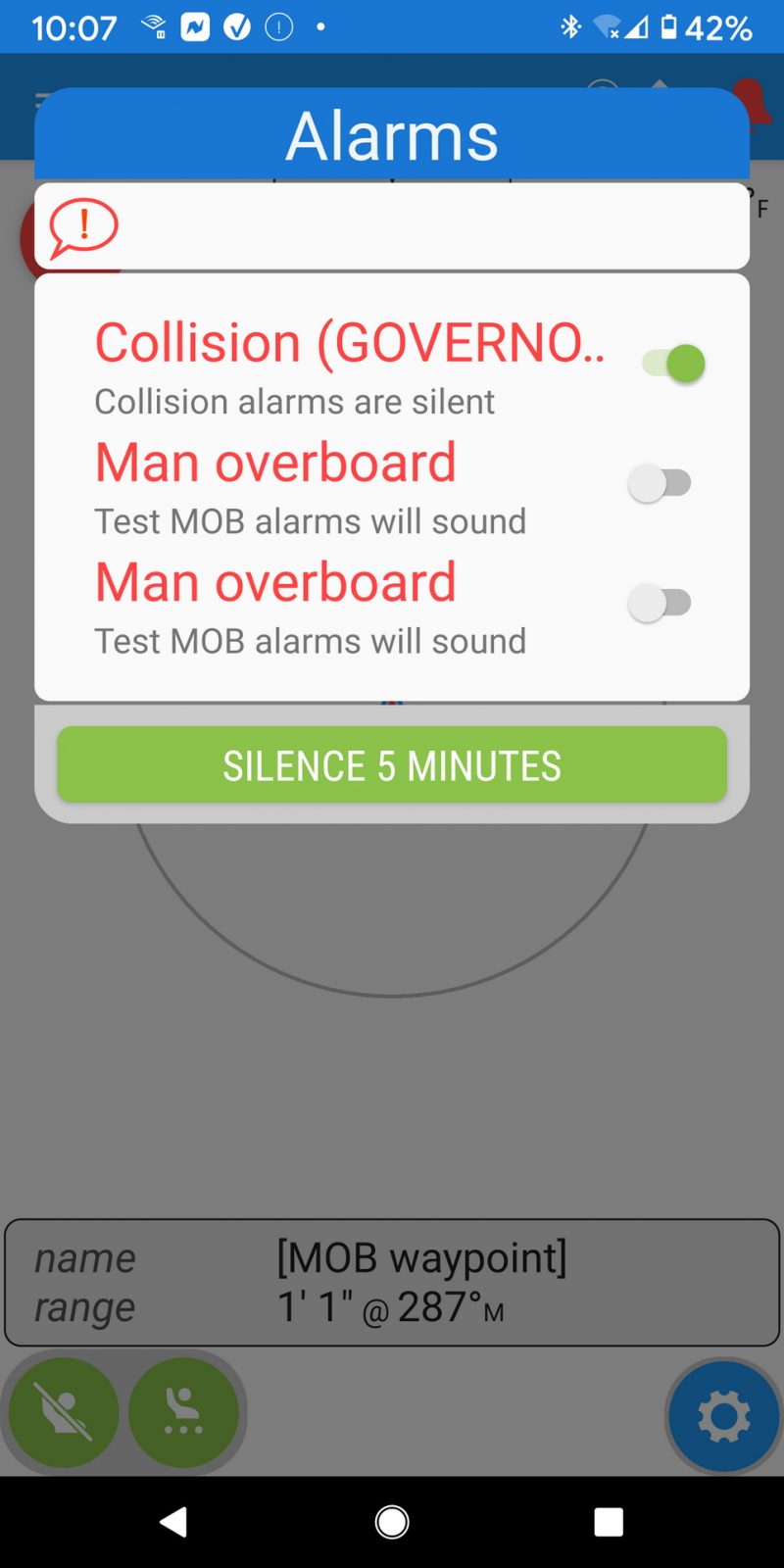
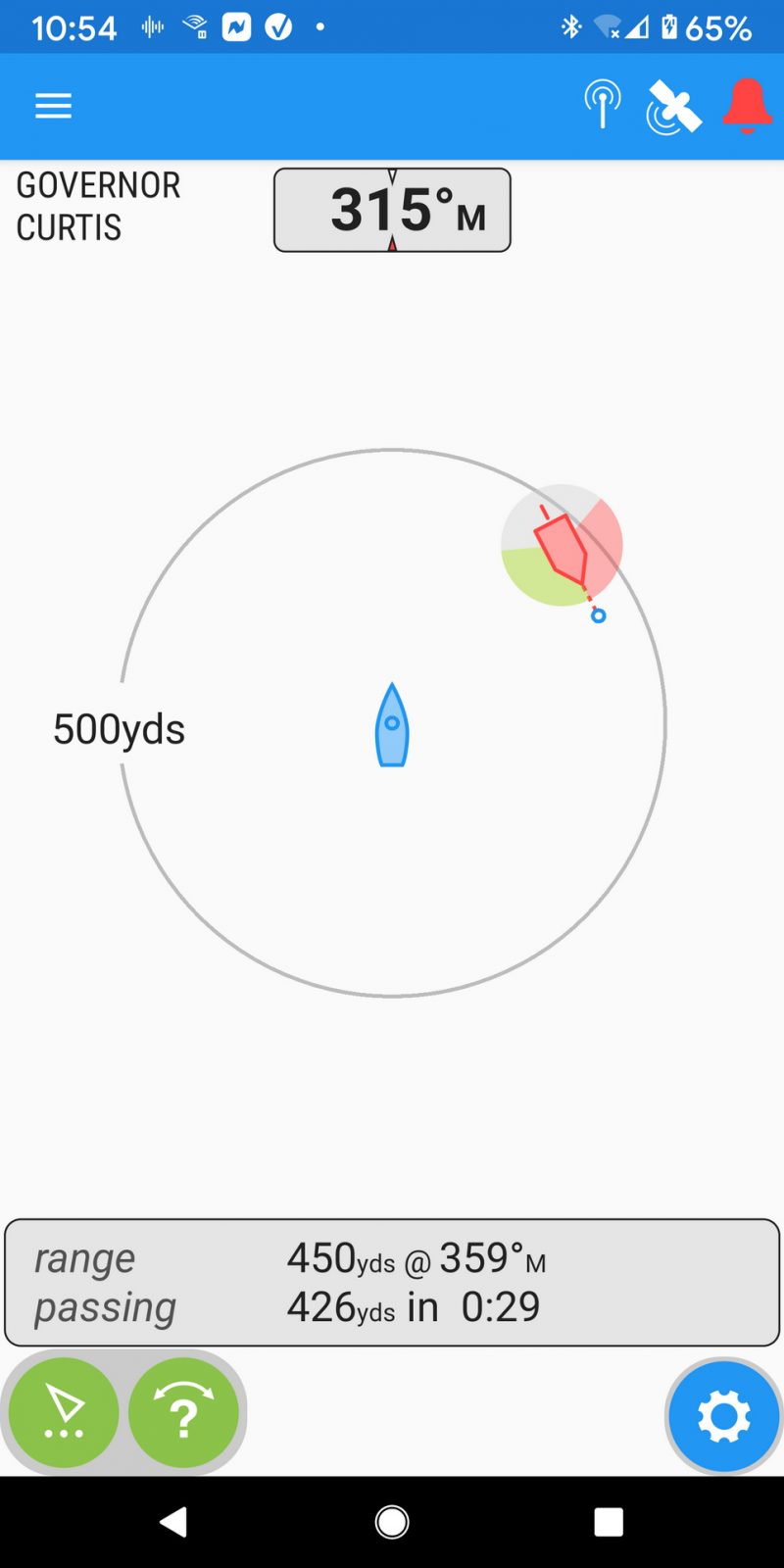
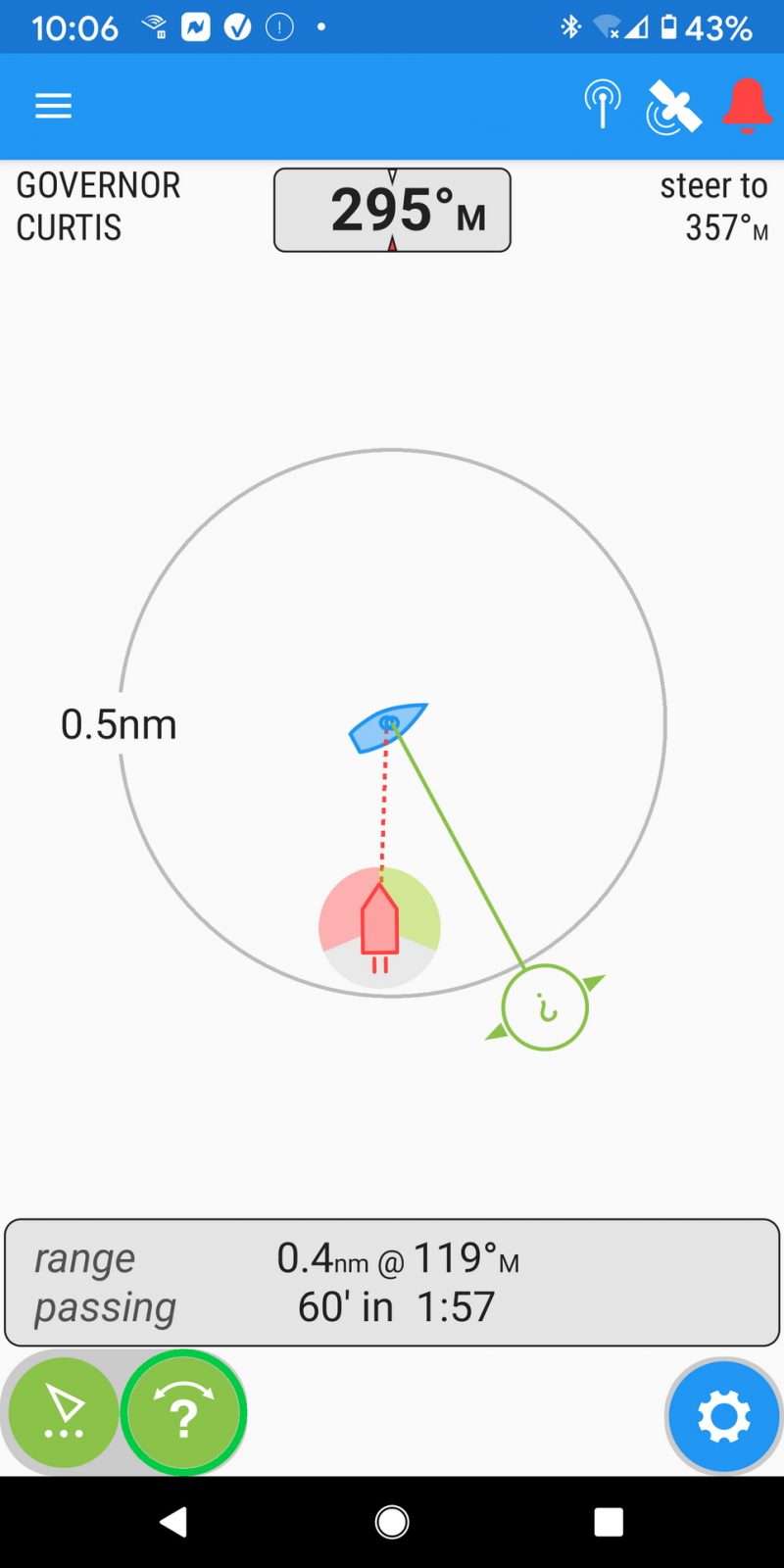
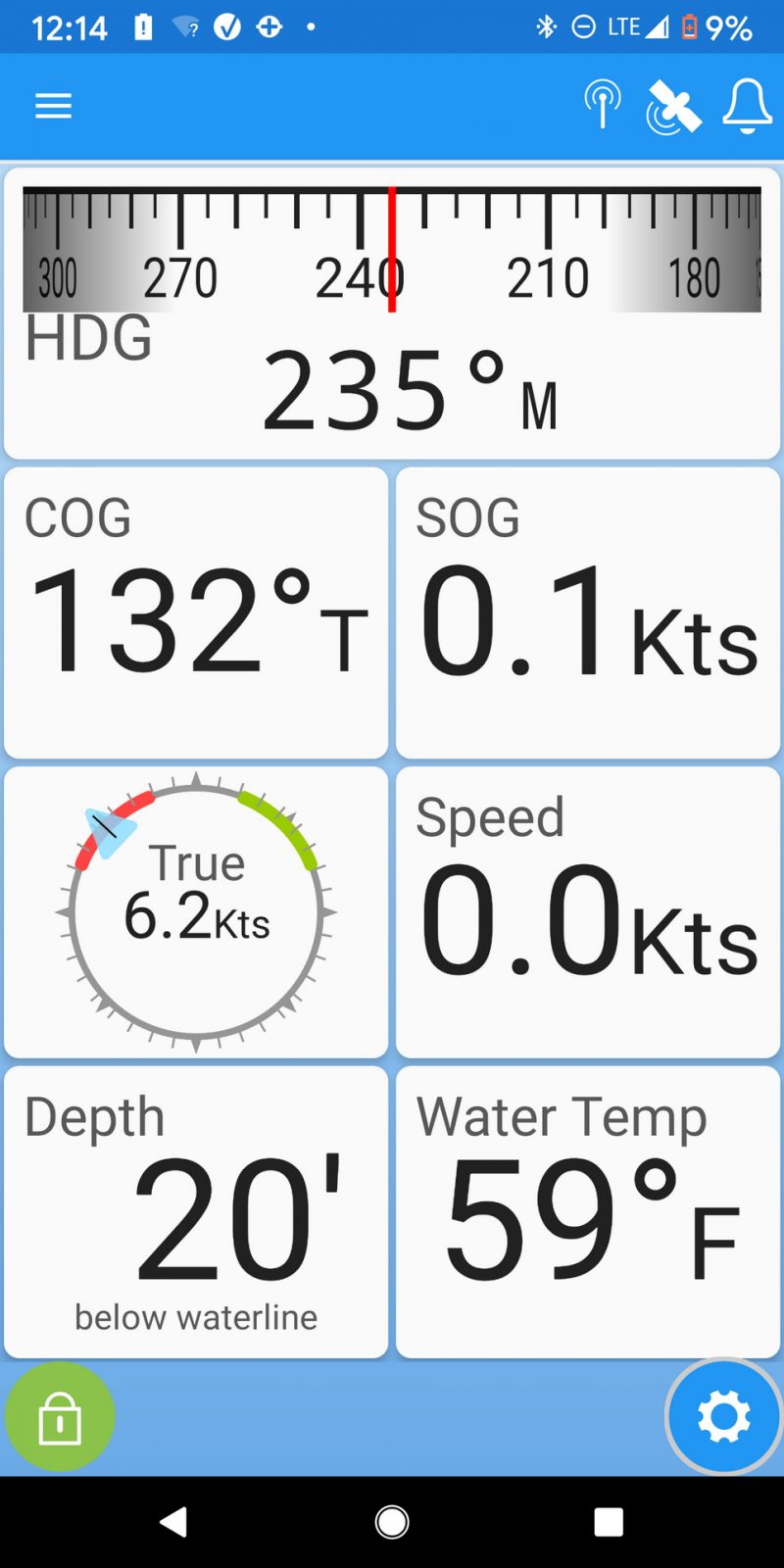
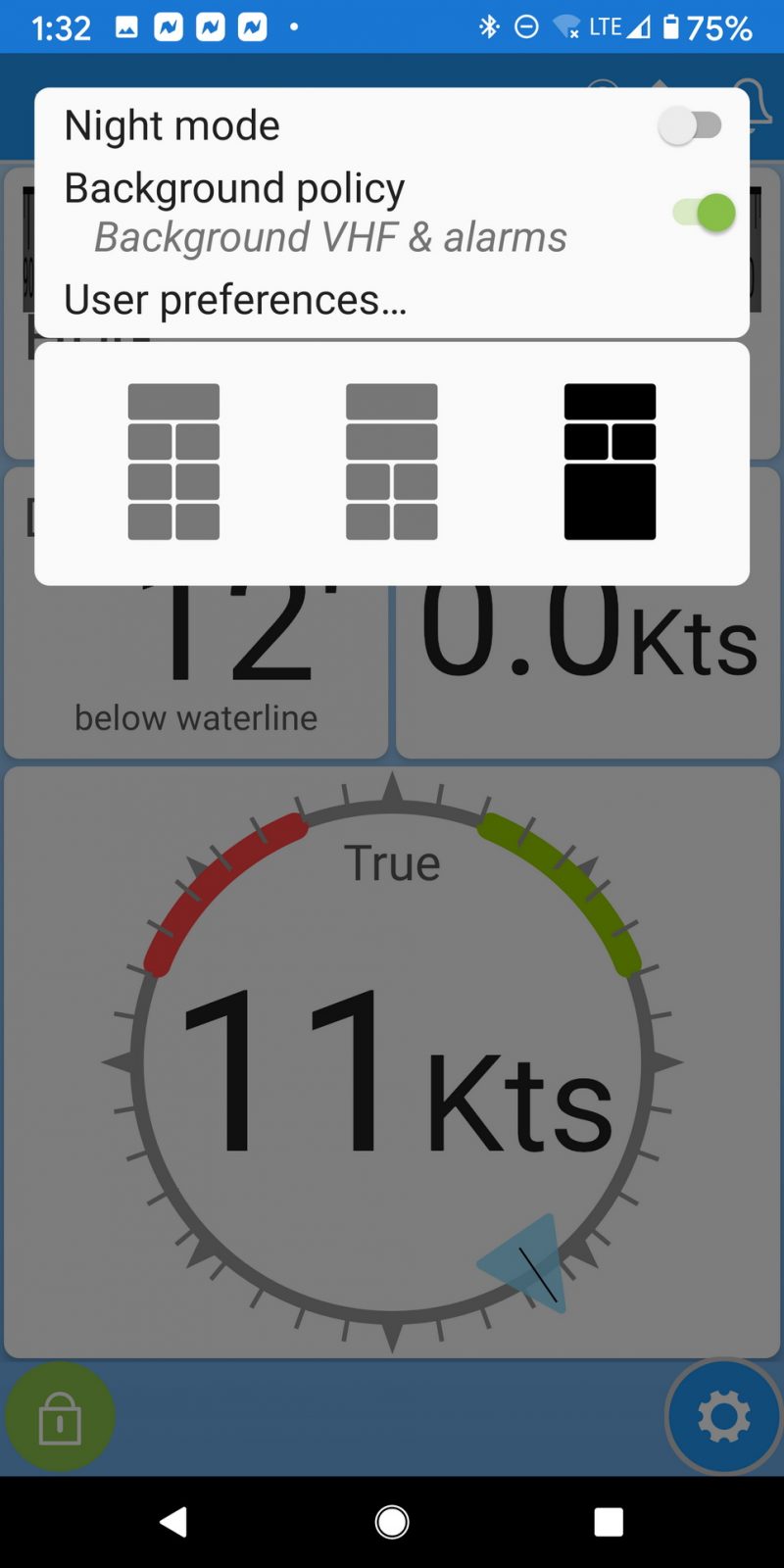
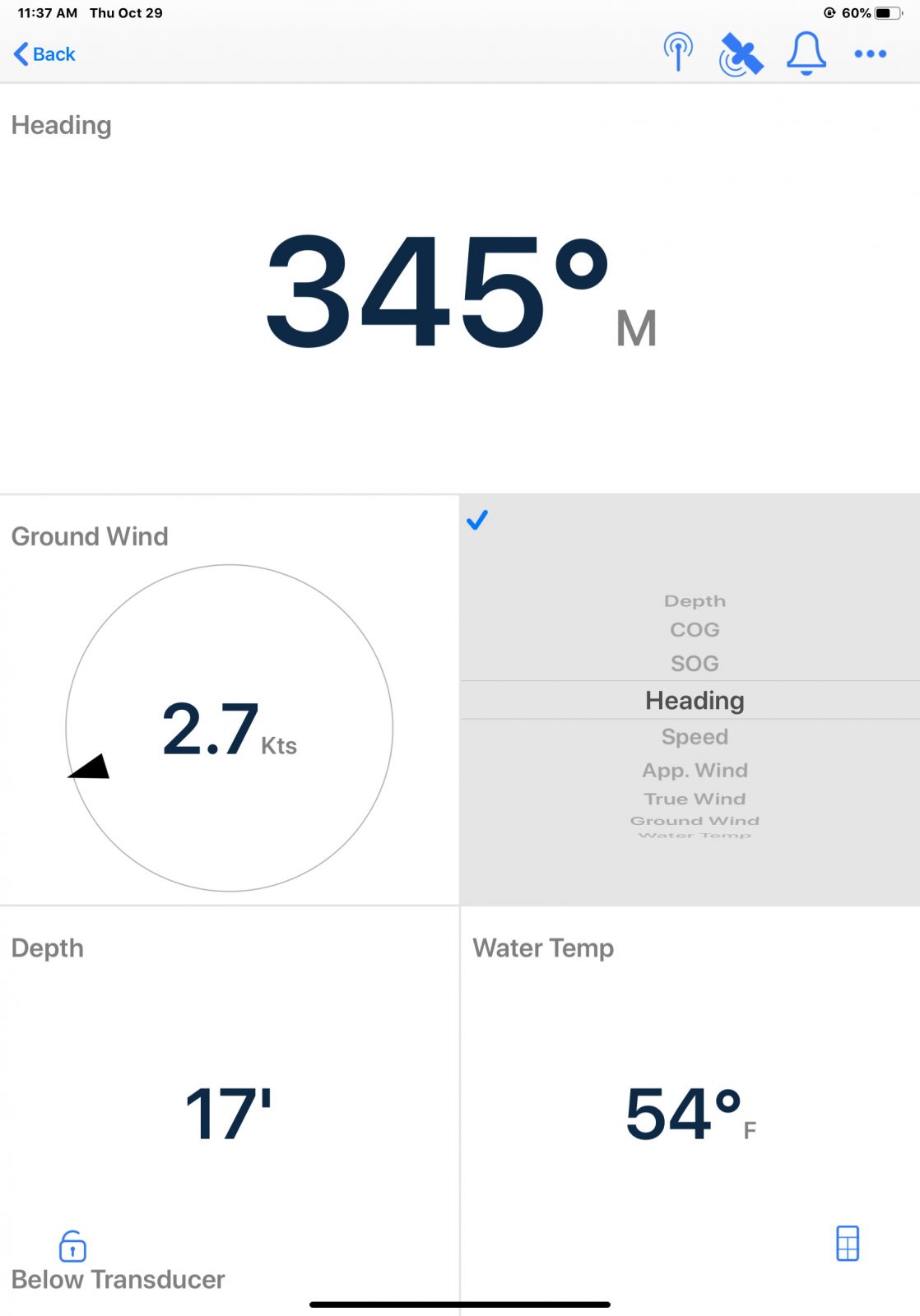
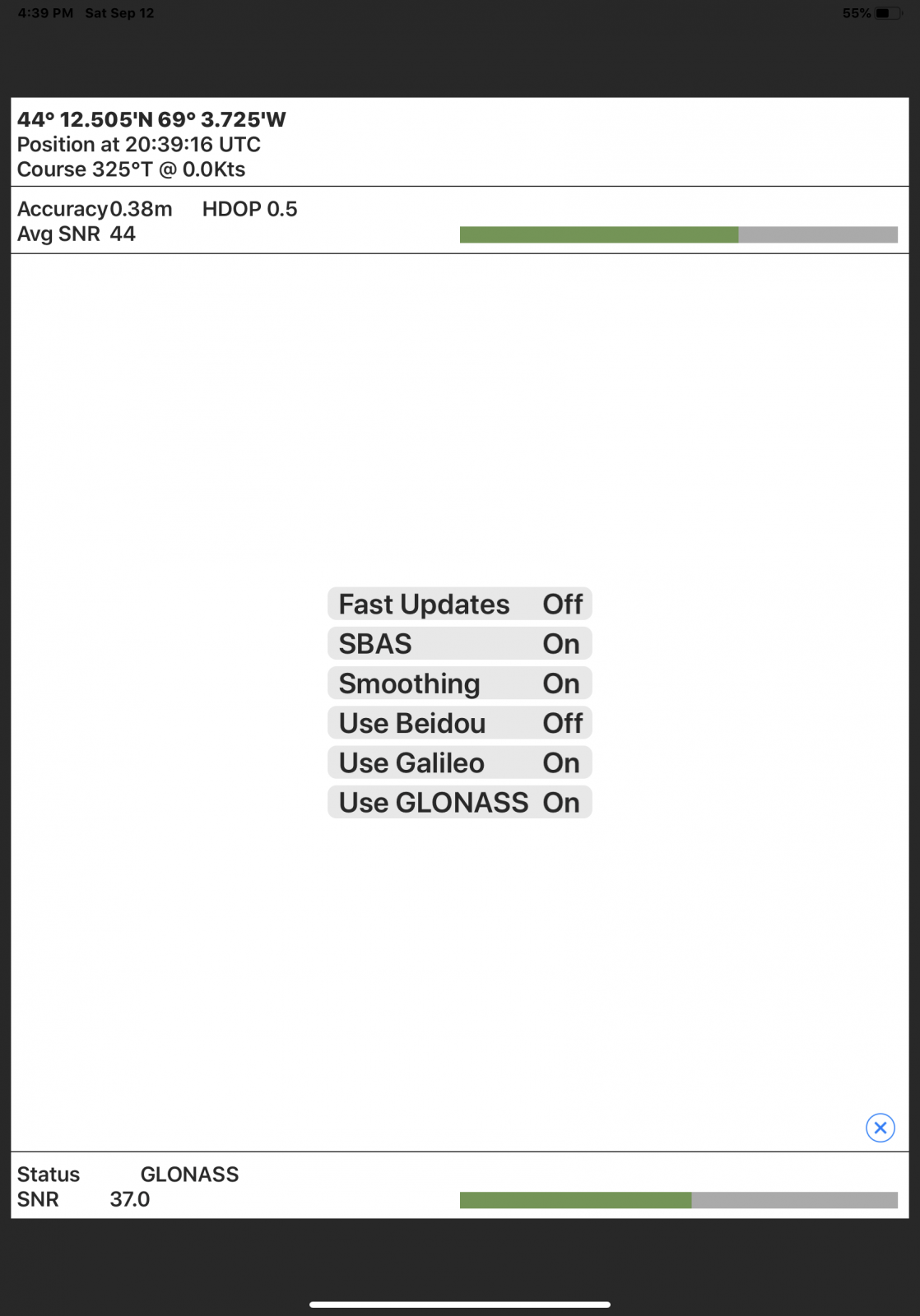
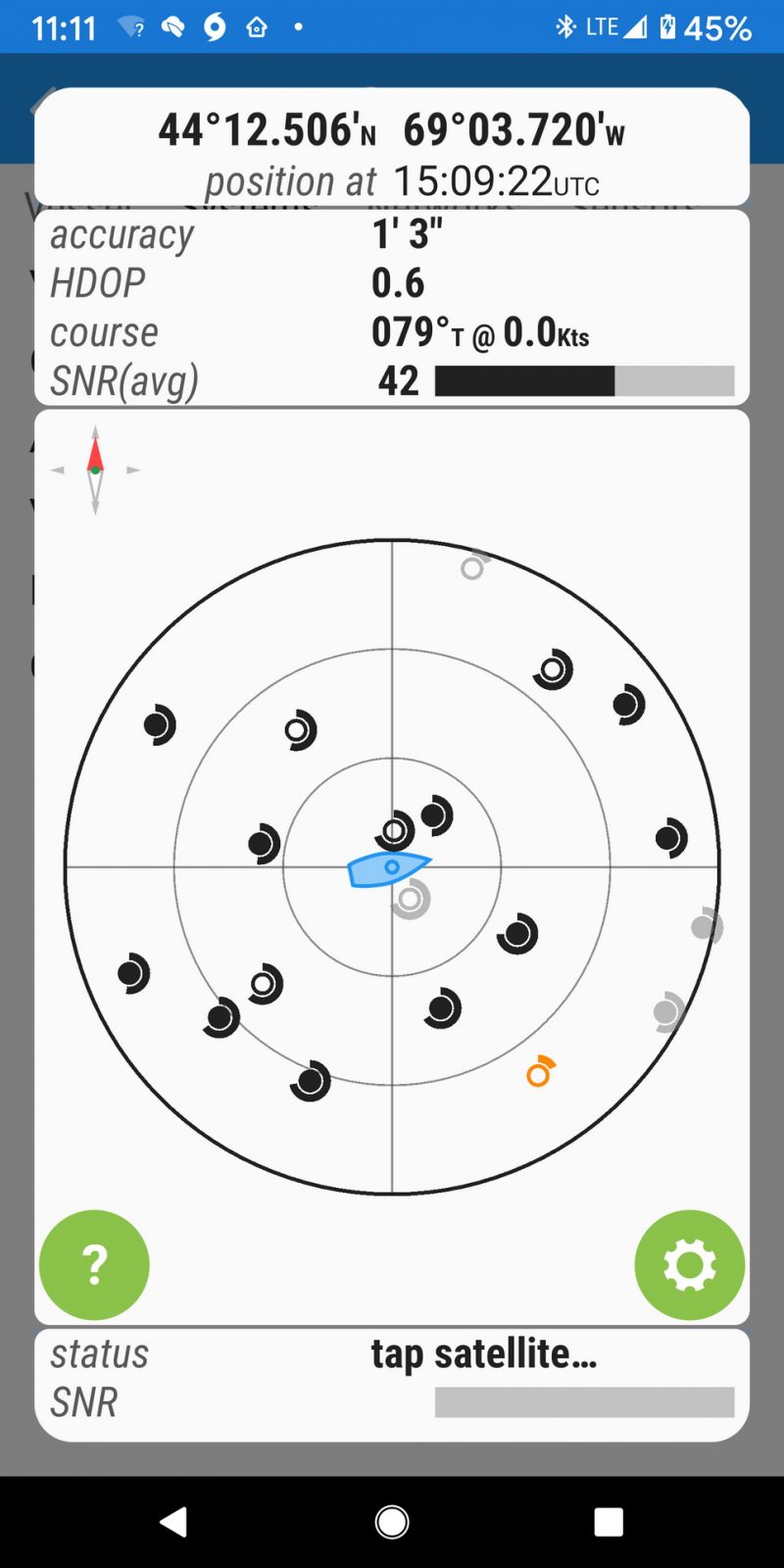
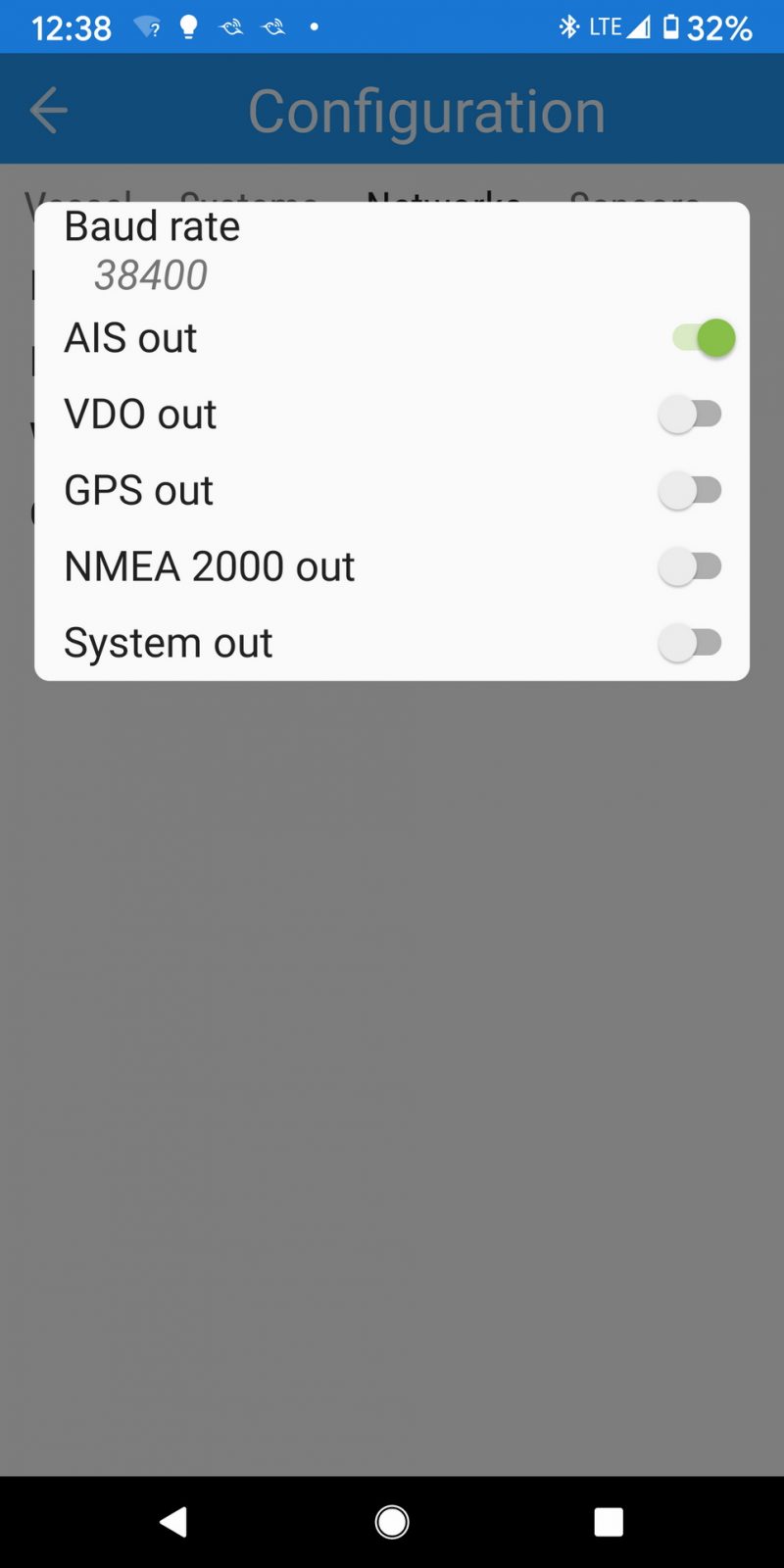
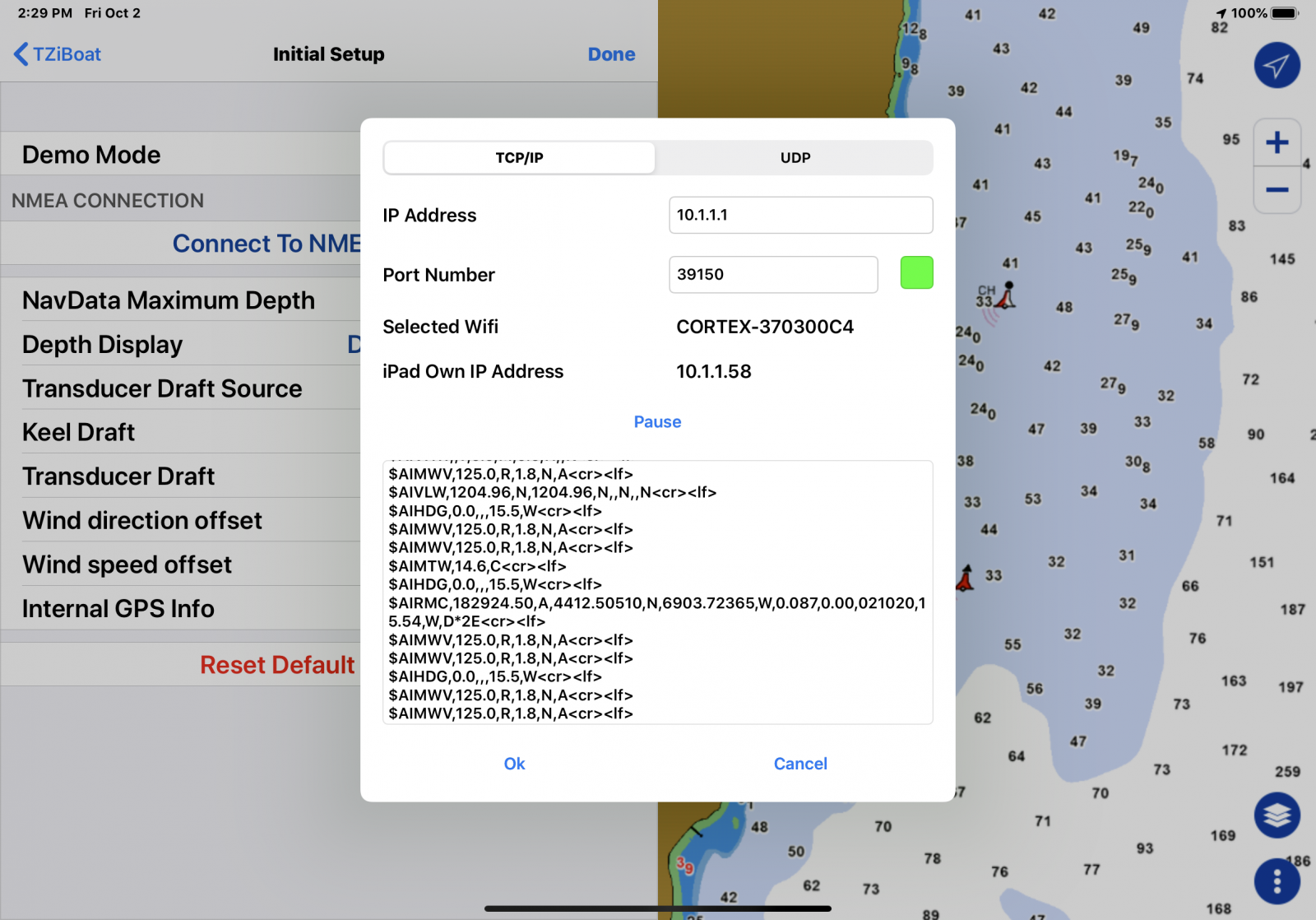

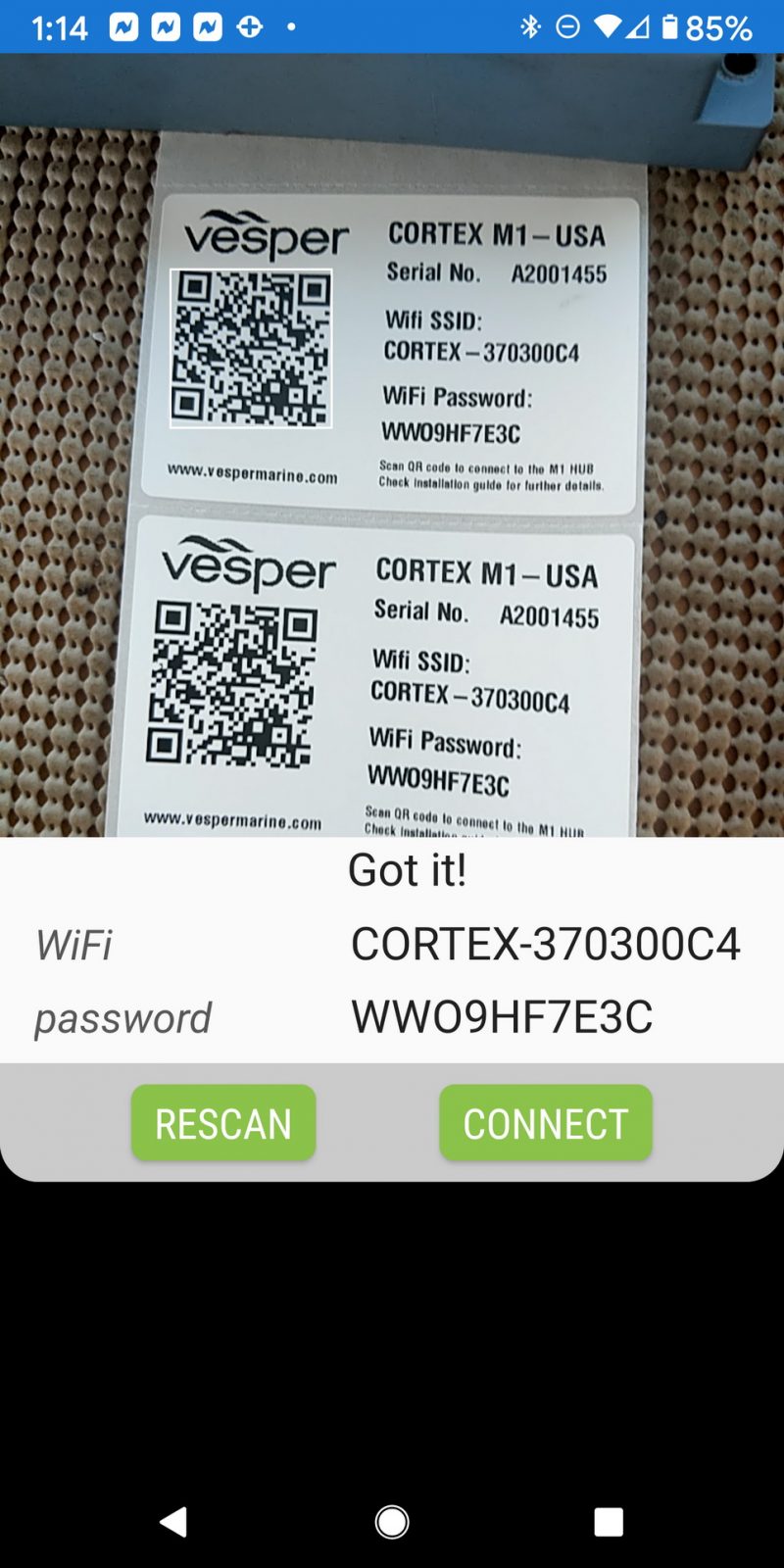

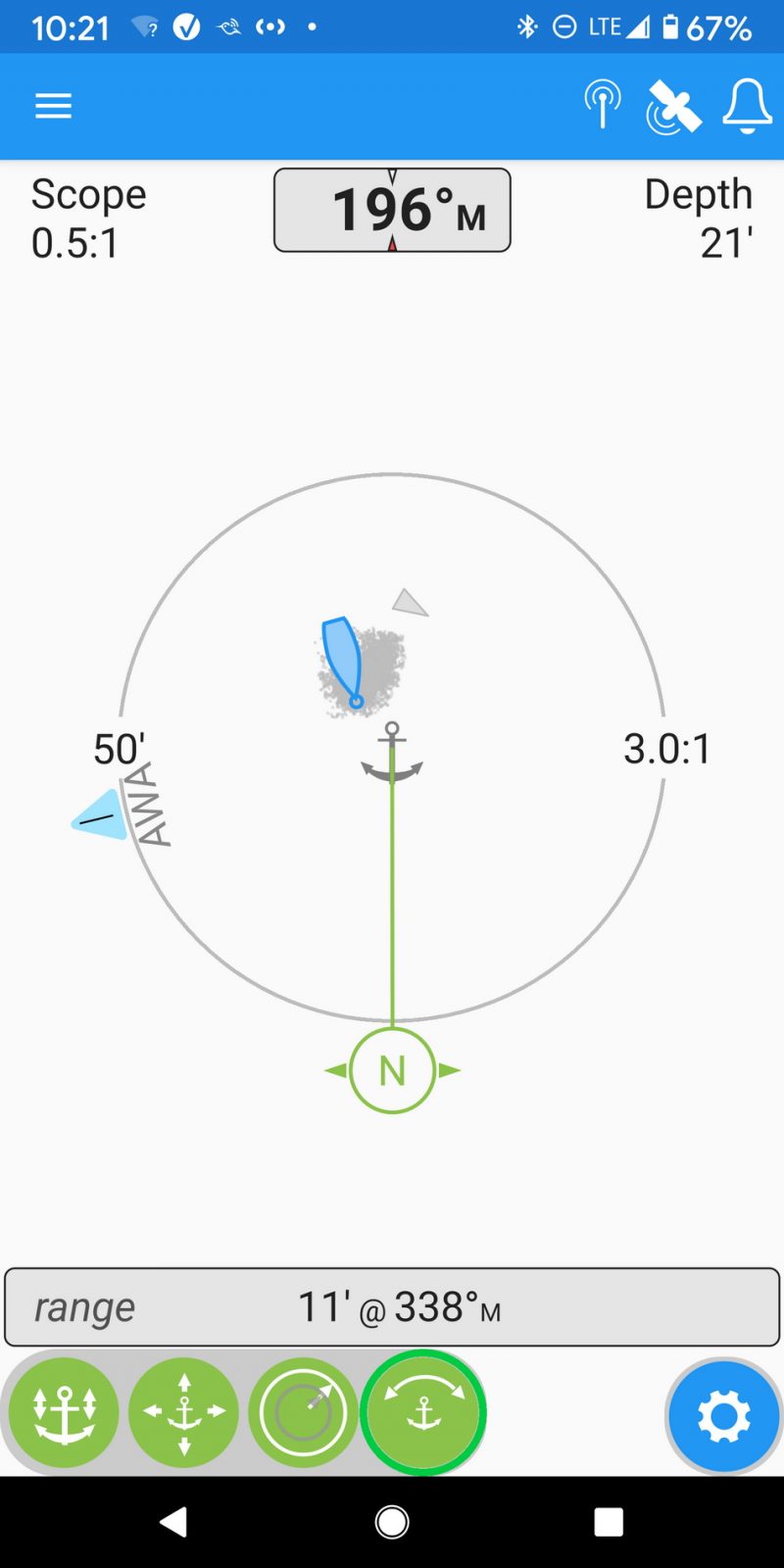
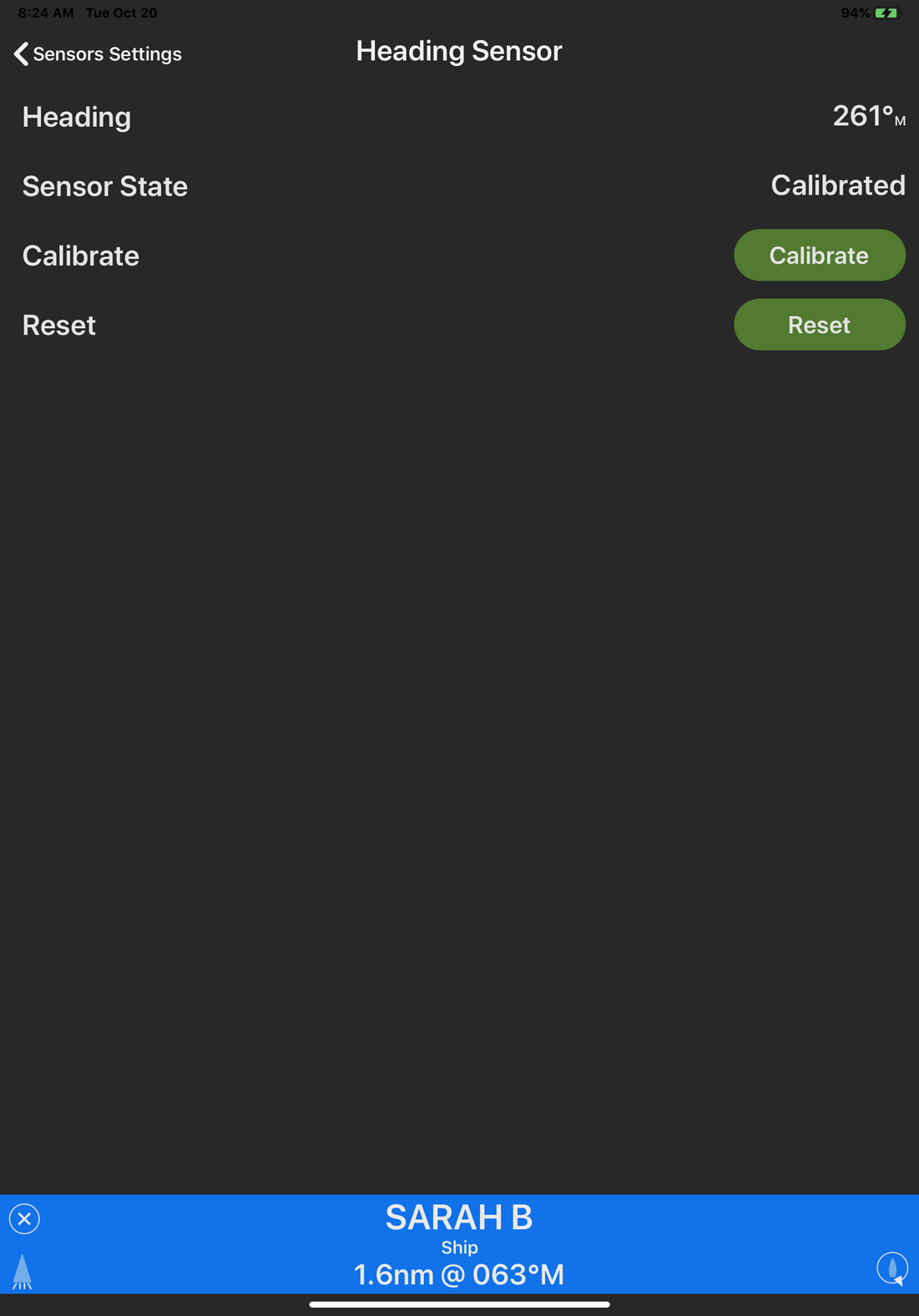
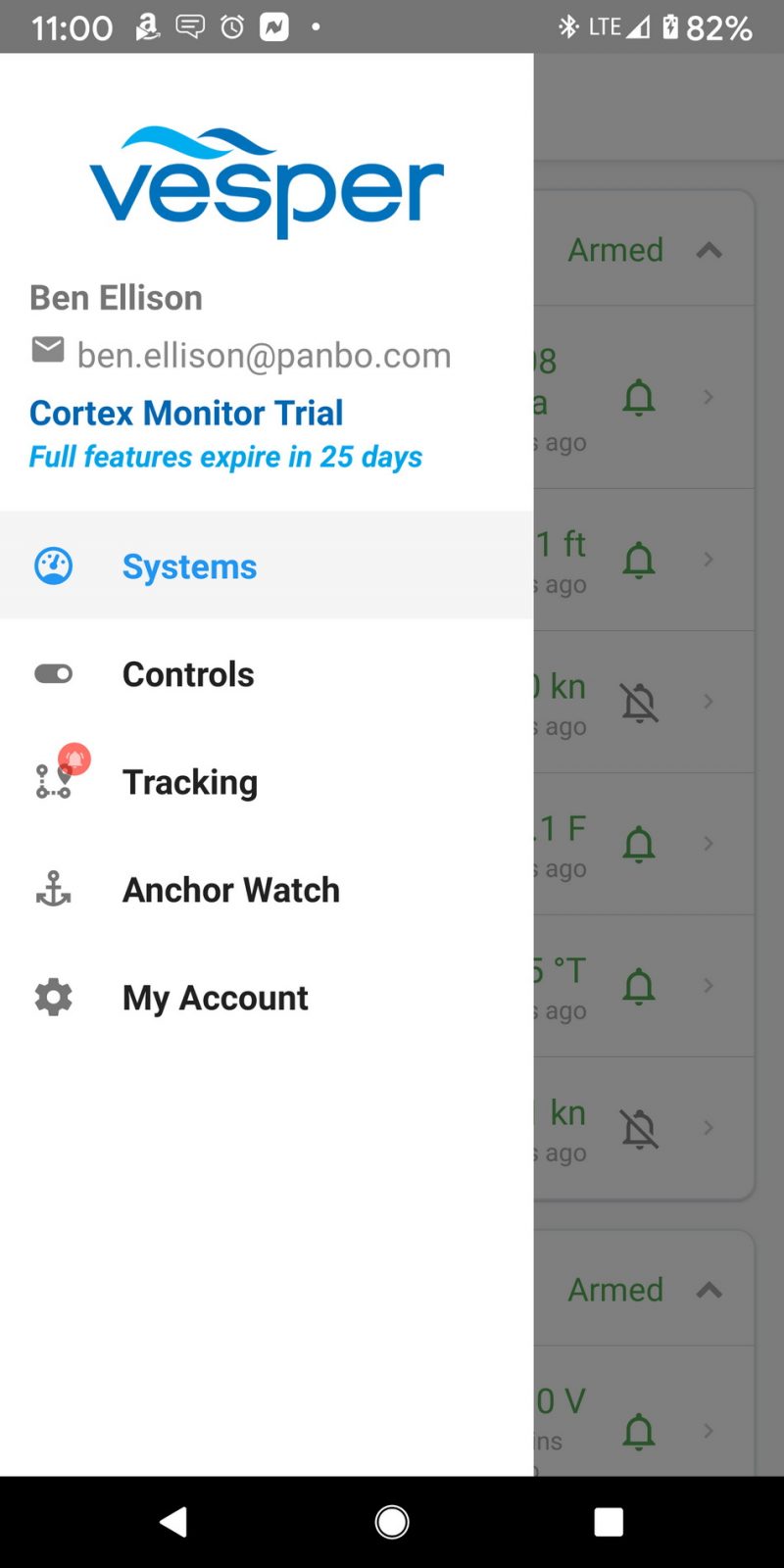
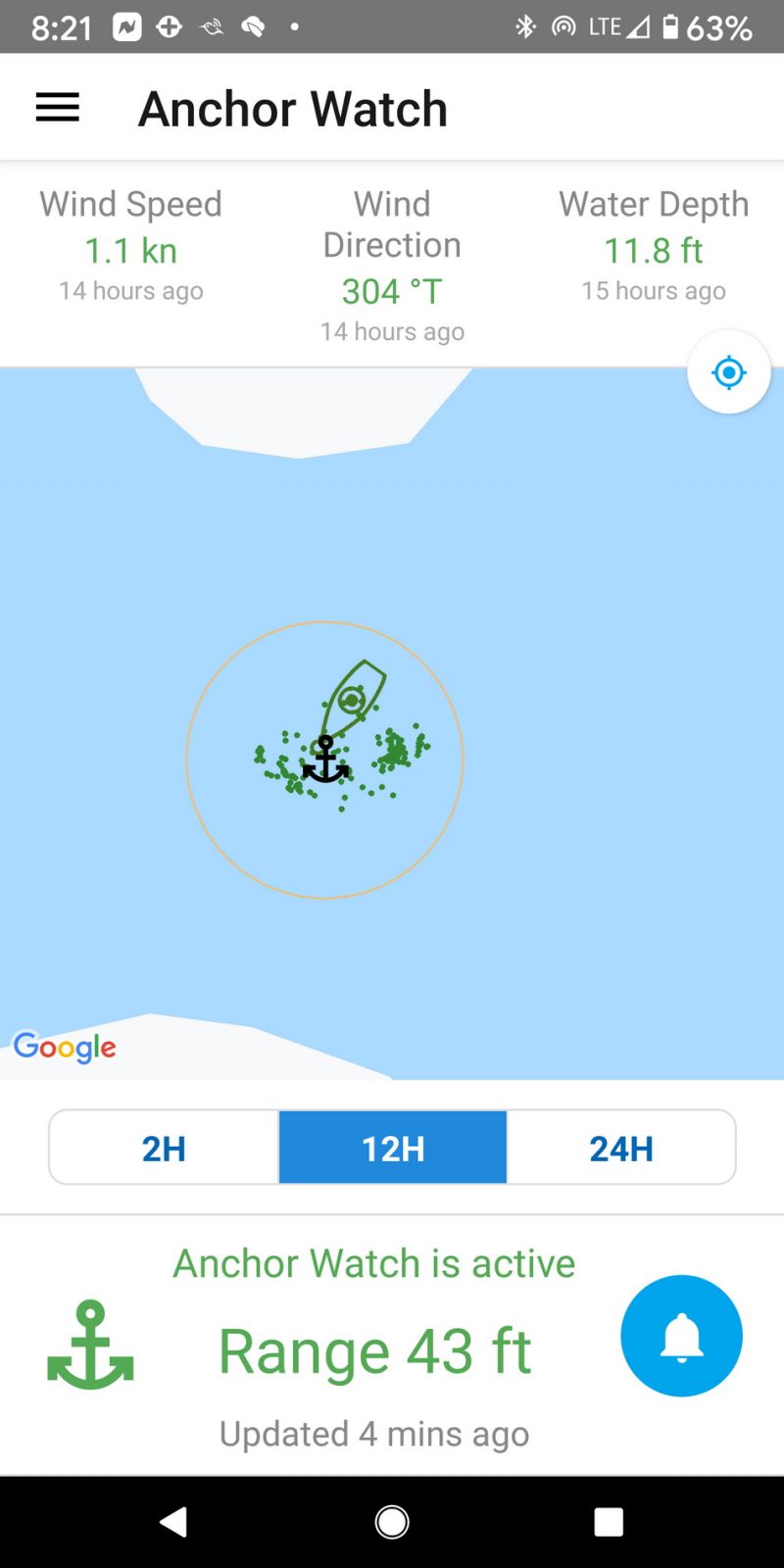
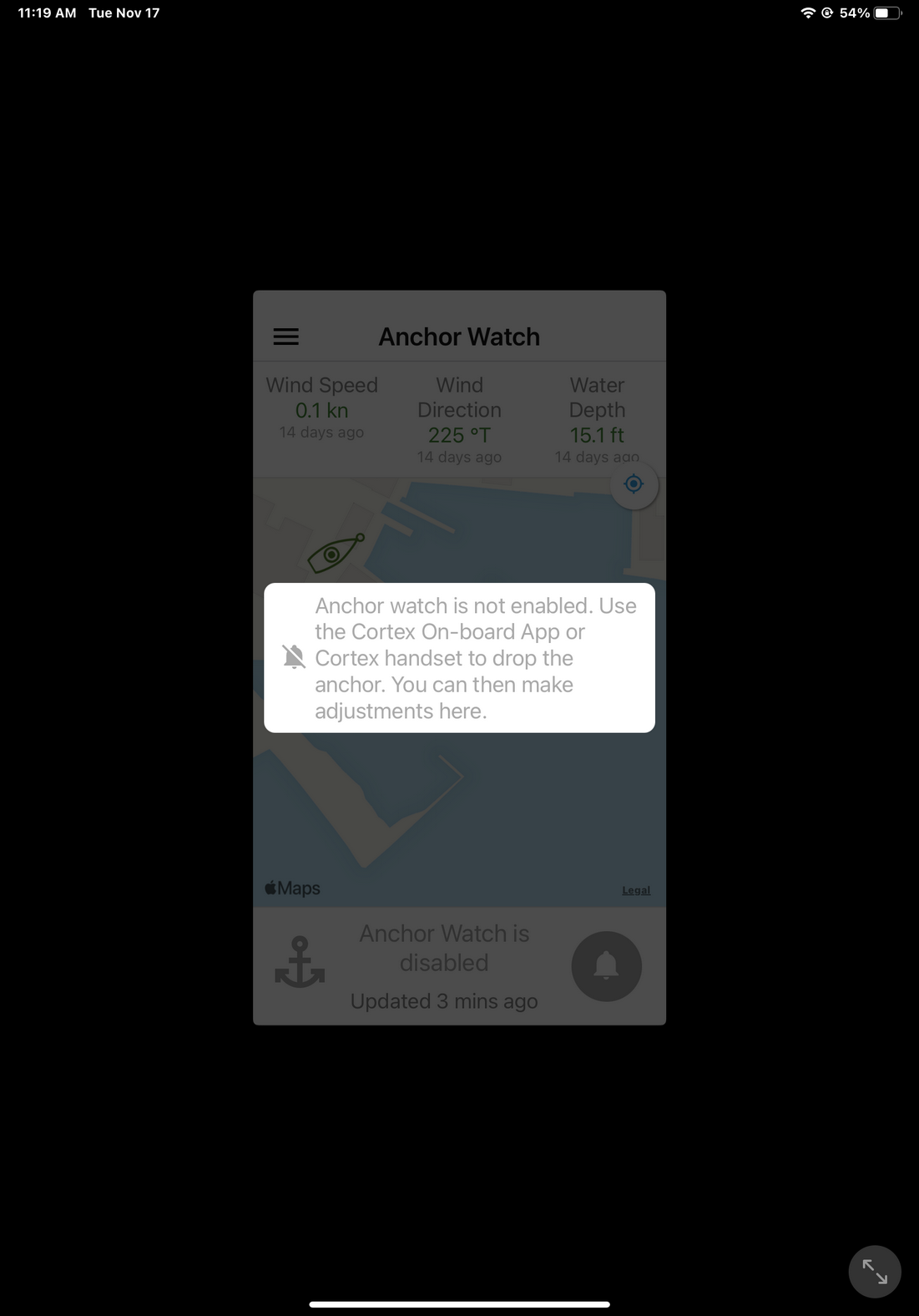
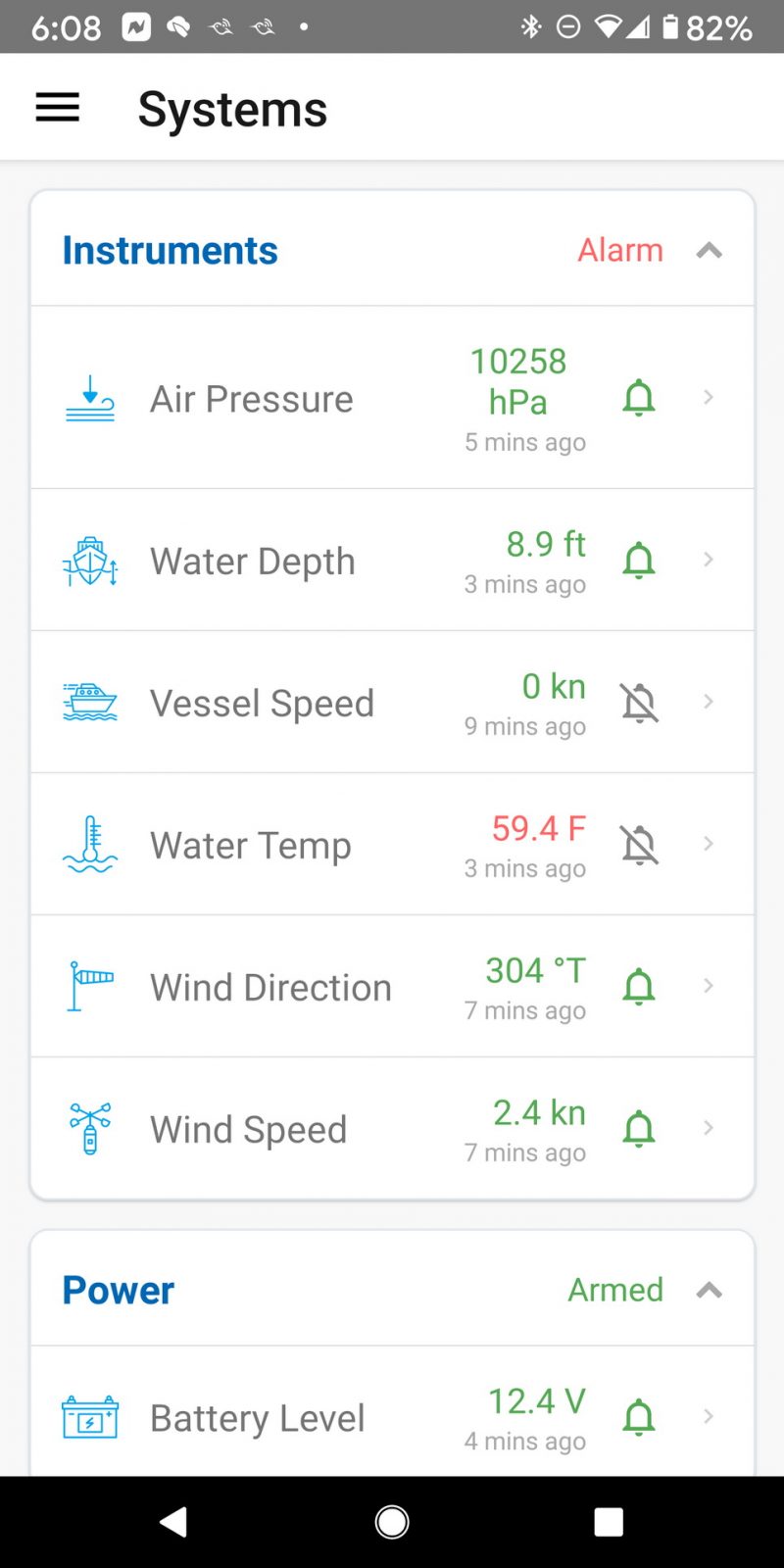

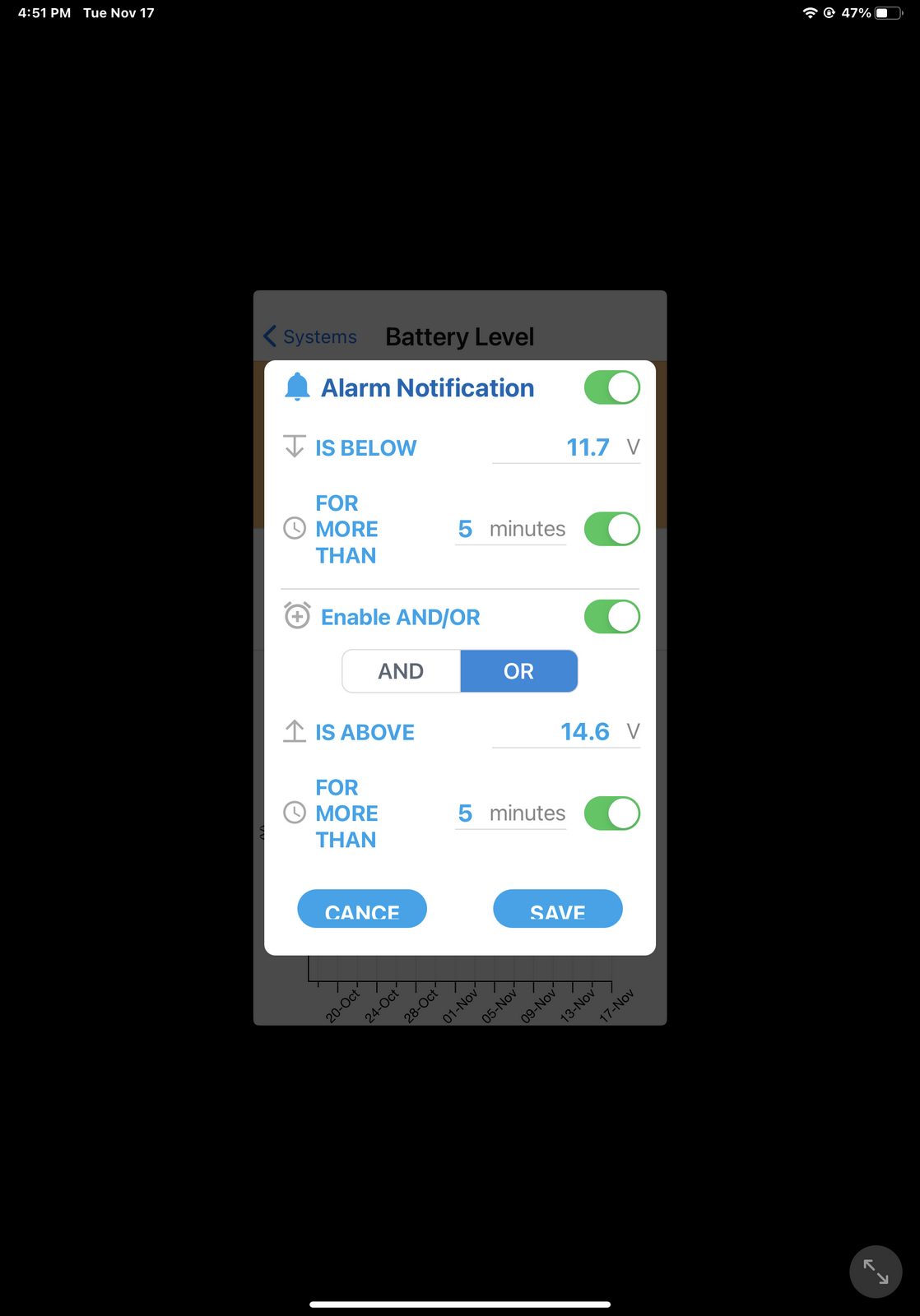

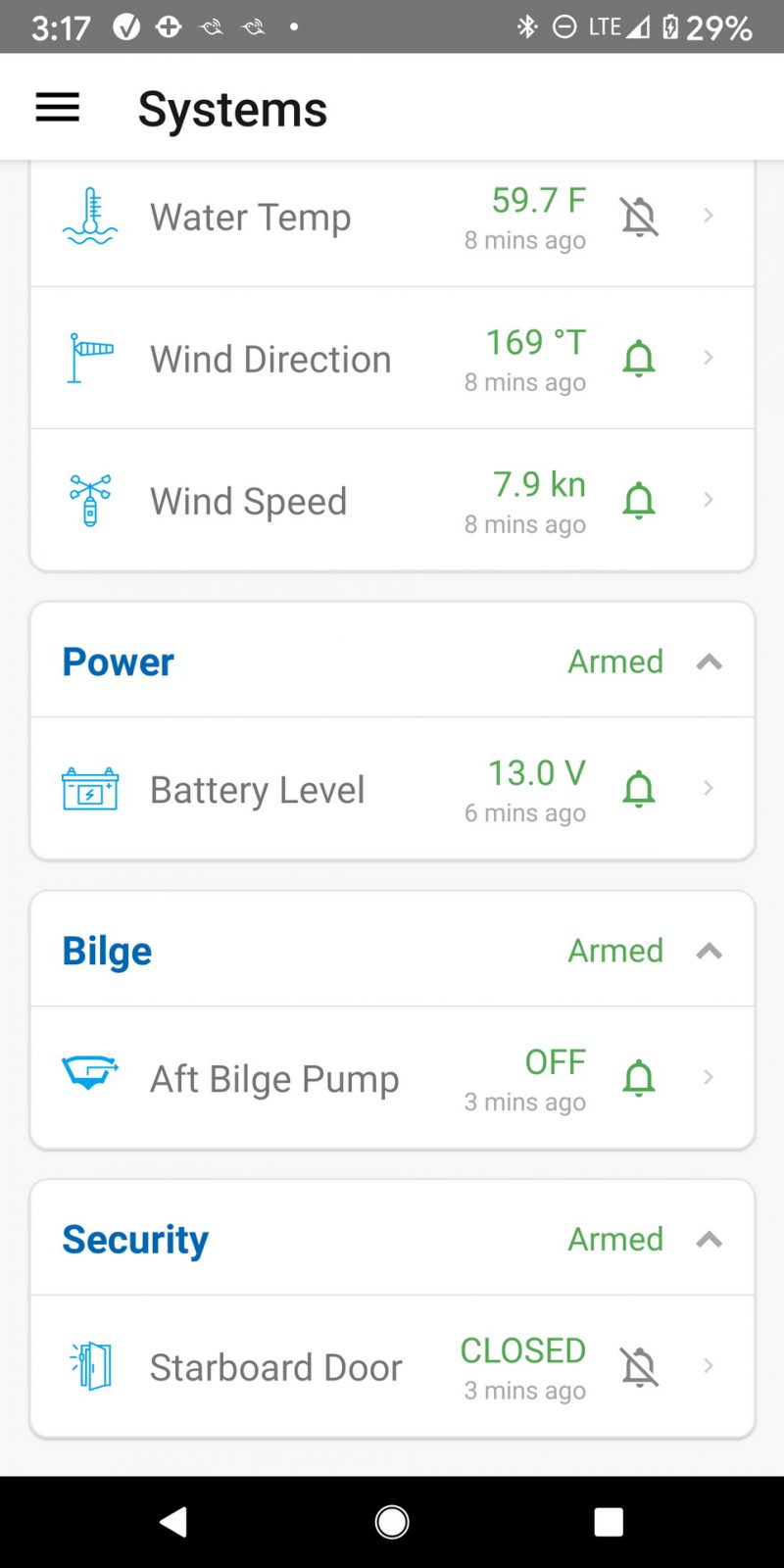

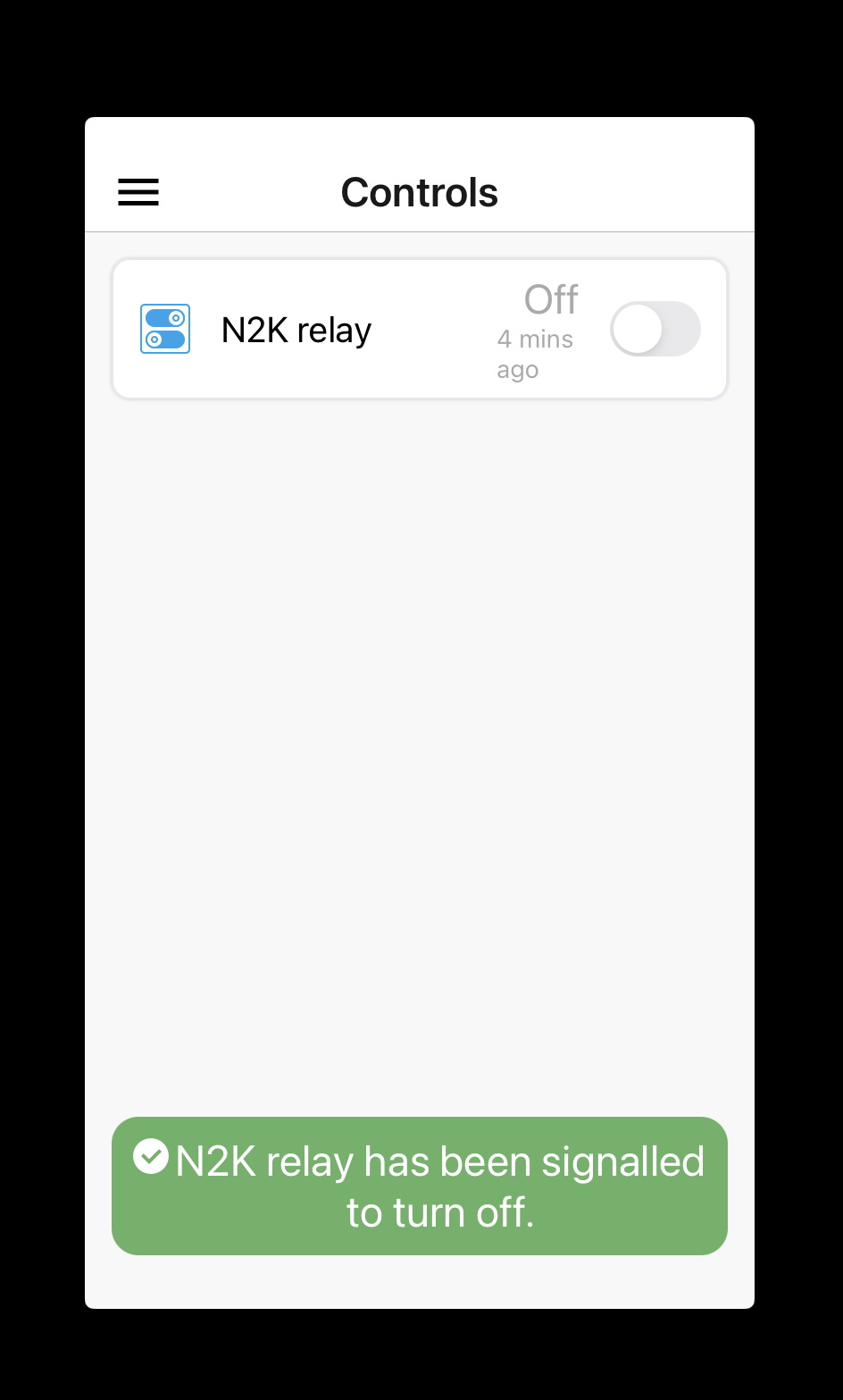
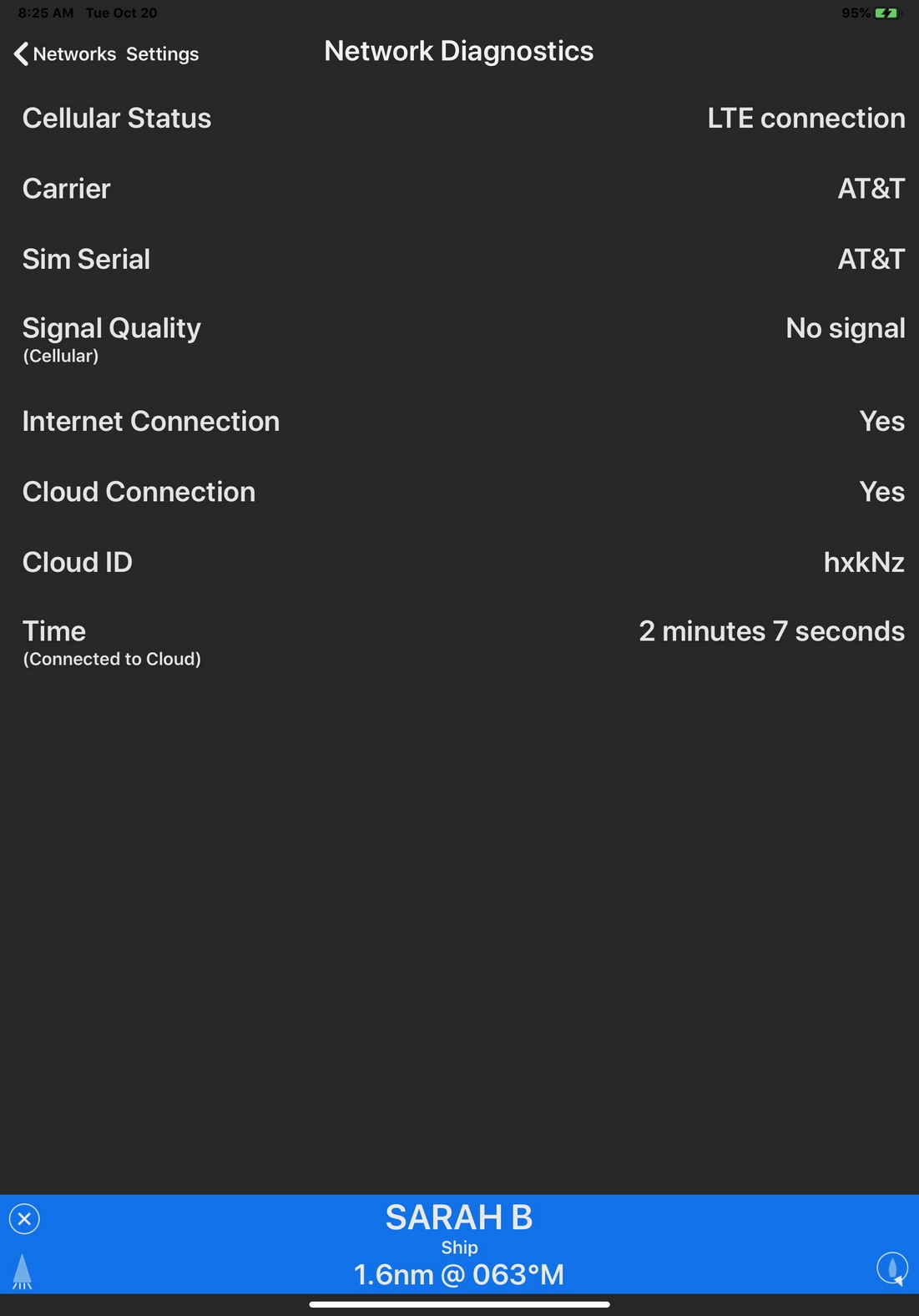












Great Write Up Ben,,
From your comments it sounds like this needs its own phone service. I want wifi on the boat, of course. Can I use existing cell service to run this device, or can I use it to provide cell service to the boat, or would I need two cell lines on the boat?
Correct, Nick, Cortex can only use its built-in cellular service for monitoring and that cell service can’t be used for anything else. But that’s pretty common for boat monitoring systems and true of two other major new systems, Siren 3 Pro and Garmin On Deck (which, also like Cortex, can use NMEA 2000 data in their monitoring).
I too like the idea of separating the cloud connection from the monitoring system, and that can be done with Maretron and FloatHub products, among others. But most monitoring, video certainly excepted, involves very little data and companies like Cortex seem able to negotiate multi-service plans that cover broad geographic areas, if not global, which they can then fully integrate into their system with a relatively reasonable subscription cost.
In fact, with Cortex, if you can do without the notifications, relays, and remote Anchor Watch, you can check out your boat data from your phone up to twice a day at no charge for the product’s lifetime. Which may be a first, and I think a lot of users will especially enjoy it during winter layup and then buy monthly service for the off-boat Anchor Watch and other alarming:
https://www2.vespermarine.com/cortex/plans
Hi Nick, You and Ben are correct. However this is something that we have been looking at for some time and recently has gotten more attention as we are getting more feedback from Cortex users. Combine that with cellular coverage being limited in so many places in the world having the ability to connect to existing network connection onboard certainly has it’s benefits.
As Ben mentioned in his post that he will keep folks aware of any updates in the comments. Keep an eye on this post as Ben is so great about doing that and I suspect there will be some updates to this post in the not so distant future.
Wow. Thanks for the detailed write up! I recently got an email from Vesper outlining a few up-coming features, including Boat Network, Channel Scanning, and Intercom.
As for the VHF pass through, I do not have a secondary VHF, so I added a Shakespeare AM/FM breakout box and wired that up to my onboard Stereo. Now I have VHF, AIS, and AM/FM all running off a single antenna.
Just noticed that Doug Miller posted an interesting review of Cortex monitoring:
https://www.milltechmarine.com/Vesper-Cortex-Monitoring-One-of-the-most-compelling-reasons-to-buy-this-product_b_40.html
Especially note Doug’s PS, wherein he learned about an engine hose gone wrong from the bilge pump activity reported by Cortex Monitor app. He was onboard at the time, so lucky he was also in cell range. But here’s the thing: I haven’t heard it discussed yet, but it seems completely possible that Cortex off boat monitoring alerts like that could also be onboard alerts via M1 buzzer, H1 handsets, and Onboard app.
I saw this at the Miami show in February, and immediately decided I wanted it. I am doing a yard period in April with a major electronics refit on my Nordhavn and have asked my installer to look into changing my radios. After reading this, I may layer it on at first so I keep the other radios as backup and as a loud hailer. My installer was a little concerned about distribution and tech support, should I worry about that?
Best,
Maldwin
Hi Maldwin, I know several installers who gladly work with Vesper Marine products, and I believe that the company has built out nearly worldwide distribution since its startup in 2007. Here in the States they sell wholesale at least through CWR Electronics, and I think that’s where some of the first Cortex shipments went. And, incidentally, while based in New Zealand, two of the cofounders are Americans who sailed there on a yacht named Vesper.
https://www2.vespermarine.com/about-us
Hello Maldwin,
Just to echo Ben’s comment we have an amazing global dealer and support network. Although we take a slightly different approach than a lot of manufacturers, like Garmin, Navico, Raymarine, etc. in that we have try to form true partnerships with a core group of knowledgeable dealers and distributors. In other words, we choose quality over quantity. And while we are headquartered in New Zealand in 2007 we opened an office in New Jersey to better support dealers like your installer as well as customers like yourself. We pride ourselves on our service and believe we have a track record to support it.
That being said we do have a couple distributors in the US that I am sure your installer currently deals with and if not I can personally introduce him to one and make sure he is in good hands.
Best Regards,
Jason Young
-VP of Sales
Vesper Marine
128 Bartlett Ave West Creek, NJ 08092
Phone: (609) 246-5067 Fax: (609) 277-2690
http://www.vespermarine.com
Thank you Gentlemen,
I have a meeting with the installer next week, and based on this information, I think we will move forward.
Hey Ben . . . loved the article and commentary . . . interested in your ability (capability maybe?) to interconnect with your hearing aids via bluetooth. This concept is becoming more and more easily used as hearing aids are being fitted to additional boat users every day . . . should we just say “boat users are aging?” Somewhat funny but actually a very serious and useful concept.
The Cortex Onboard app works great with my hearing aids. Since I upgraded to Phonak Marvels almost two years ago, my Pixel2 XL phone is almost always to connected to them over BlueTooth and so I hear the Cortex audible alarms right in my ears. And that’s true even when I’m listening to music, podcasts, or Audible books streaming from the phone. Cortex Onboard pauses other streams just like when I get an actual phone call.
Also, in my view, WiFi to phone and then BlueTooth to hearing aids is the way to go, largely because of the capabilities above and also because WiFi range from something like Cortex will be much better than if it used BlueTooth directly.
Finally, I’ve been meaning for years to write about the Bose Hearphones I often use when I’m underway in the pilothouse (and other noisy conditions). They are great at reducing the engine noise and can also amplify sounds very well in difficult environments for people with hearing disabilities like live theater.
On the boat I used to turn up the VHF to max volumn so I could hear it despite the Hearphone noise cancelling and that’s still true with Cortex Onboard (except for the audible alarms). But Cortex Onboard could be updated to include at least the receive side of the VHF now only heard with the Cortex handsets. That would be excellent with noise cancelling Bluetooth headsets, especially because Cortex VHF is very clean sounding due to excellent automated squelch.
As for the Bose Hearphones, I was sorry to see that they were recently discontinued, but I encourage hearing challenged boaters to check out the remainders on EBay (with 30 day trial period):
https://www.ebay.com/itm/BRAND-NEW-BOSE-HEARPHONES-Conversation-Enhancing-Headphones-Black-/264843846770
Vesper sells two versions of the Cortex M1: 100131 “USA and Canada monitoring,” and 113131 “Rest of World monitoring” (per their catalog).
I don’t understand. What about the technology is jurisdictional? What would not work for example if the US model were used in Europe?
Thanks!
Kevin, it had to do with the integrated SIM cards used for the cellular — aka “cloud” — connection that makes the off boat monitoring possible. But as of quite recently, there is only one M1 model with global cellular connections. Here is Garmin’s listing for what’s now called the M1 Global with “LTE-Cat1 with 3G fallback (U.S., Canada), 3G (Europe, Asia), integrated SIM, …”
https://www.garmin.com/en-US/p/902860#specs
Also changed from the 2022 catalog, the Vesper XB series has been discontinued:
https://panbo.com/garmin-shrinks-vesper-product-line-will-only-cortex-remain/
Does anyone know if the Vesper Cortex M1 can join the Furuno DRS4W wireless network? The Wi-Fi Gateway must output NMEA0183 sentences over UDP or TCP. I know you can. do the with the Vesper Watchmate XB 8000
Ben, I’m not experienced with the DRS4W (and have heard that its setup can be complex), but I do think that Cortex streams AIS, GPS, and boat data like Depth just like the XB 8000 did for many years on my boat. Note the Coastal Explorer app screen above. That’s all data coming from the Cortex or NMEA 2000 sources but arriving at the app as NMEA 0183 sentences over WiFi, TCP protocol. The same Cortex data stream also works well with the TZ iBoat app that can work with the DRS4W.
Anyone know if the discontinued Cortex Model M (NA only) that’s currently on sale at many online marine stores will be supported for software updates and new features? Looks like a good deal but not if it has no future. Thanks!
Andrew, I don’t think the Global model is any different except for the “Cloud Connectivity” (cellular) radio. I’m still using the original 2020 NA only hub (and original handset) pictured in this review. It’s not only been running the latest software without issue, but today I loaded the lastest beta software. Also, the cellular remote monitoring still works here in coastal Maine, unless the boat gets outside T-Mobile or AT&T coverage.
A good place to doublecheck all this is Milltech Marine, which sells both models and has deep Cortex expertise:
https://www.milltechmarine.com/cortex-m1
Thanks Ben! I’ll give Milltech a call.